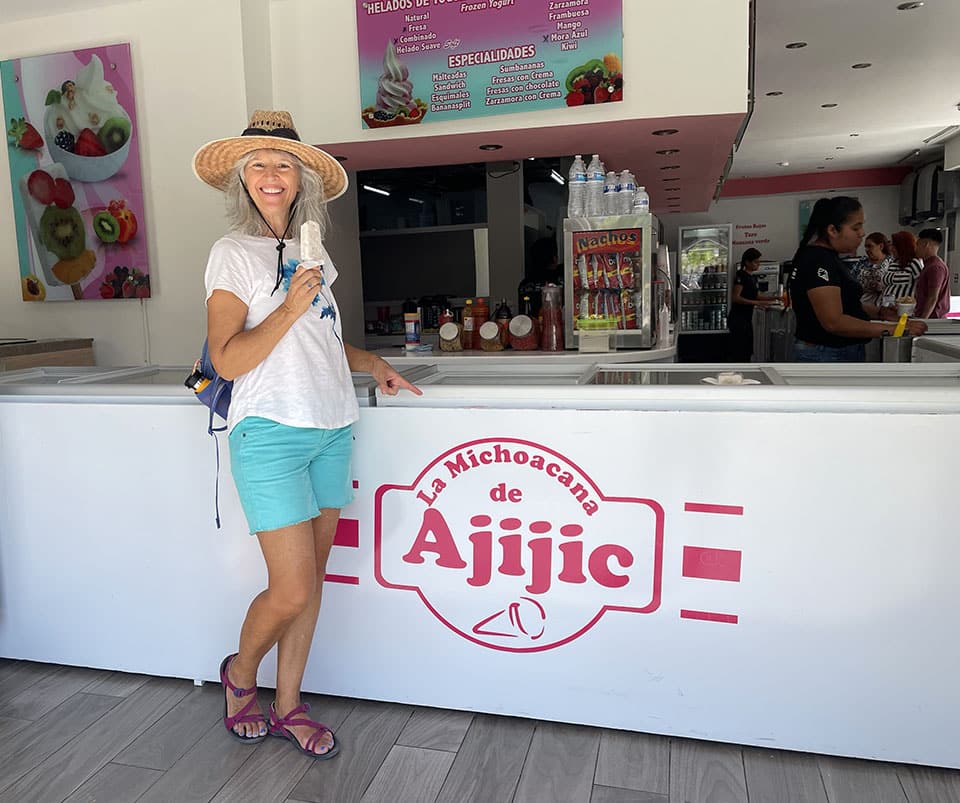
Pueblo Magico: Ajijic (“Ah-he-heek”)
What is a Pueblos Magico? And where is Ajijic? A Pueblo Magico is a small town recognized by the Mexican government for its “magical qualities”, whether that be its astonishing beauty, rich history, or extraordinary legends. The designation of “Pueblo Magico” is a mark of excellence and an indication that the town is well worth exploring for a day or two.
Ajijic is one of 132 Pueblo Magicos around Mexico. For the most part, the towns designated as Pueblo Magicos are lesser-known gems, waiting to be discovered by intrepid explorers looking to experience authentic Mexico.
But as the Eagles’ “Last Resort” so presciently sings, “…Call someplace paradise, kiss it goodbye”, so we are a bit reluctant to even write about this magical place—possibly our new favorite Mexican town. Shhhhh….. Don’t tell anyone!
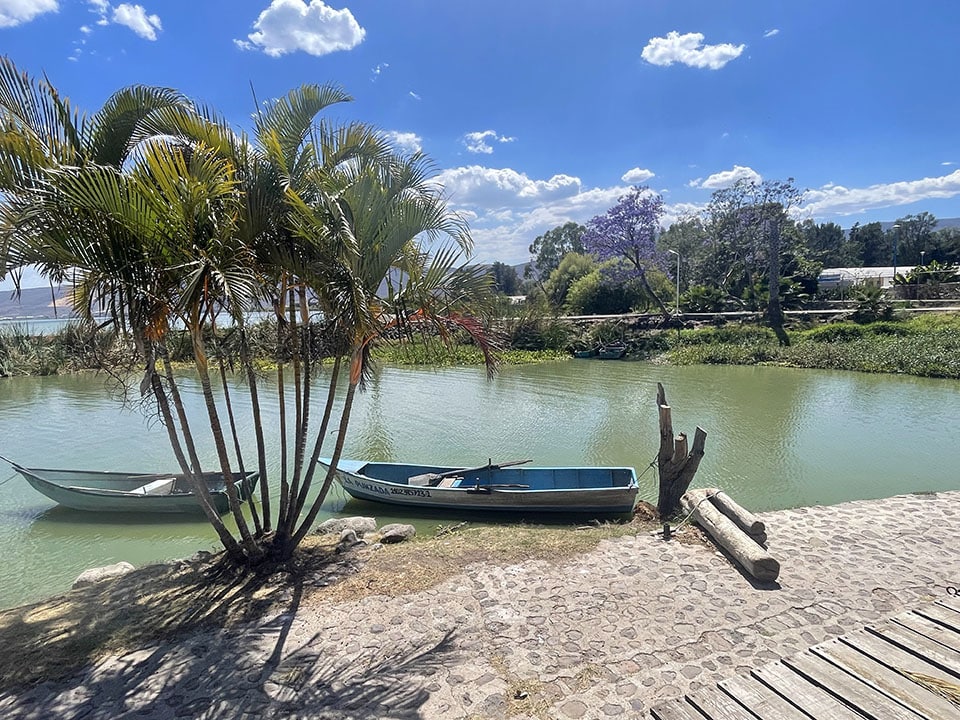
So how did we choose to visit this beautiful Pueblo Magico, Ajijic, on the shores of Lake Chapala, six hours east of Vallarta, (or an hour south of Guadalajara)? And since it’s inland we could not sail there, so how did we travel?
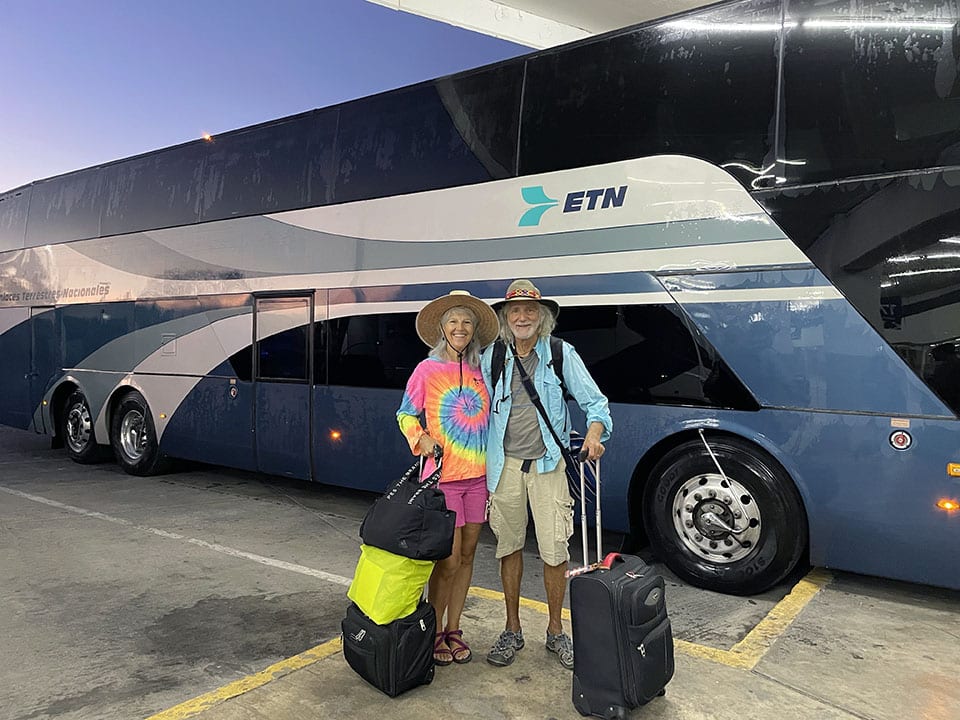
Our long-time Seattle-area friends, Patti & Frosty bought a beautiful old hacienda in Ajijic several years ago, and we had planned to visit them then. But a pesky little pandemic hit and changed so many plans for so many people for several years. Finally, the planets aligned for all of us (including Judy & Paul being able to catsit Tosh & Tikka) so we bought tickets on a first-class bus (ETN Touristar) to Guadalajara. Tickets cost $700 pesos ($35 US) each way, per person.
As in most of Mexico, public restrooms at the bus terminals cost between $7-10 pesos (35-55 cents US), and you must deposit your money, then squeeze through the revolving gate within the prescribed number of seconds, before the gate locks again. At the bus terminal in Puerto Vallarta, it took Heidi three tries to get through the gate after depositing coins (for a total cost of $1.65)! You need to be FAST. Then once inside, you must take all the toilet paper you think you’ll need, as there is none to be found in the stalls. (We generally always travel with our own TP as well, you never know where they will be out.)
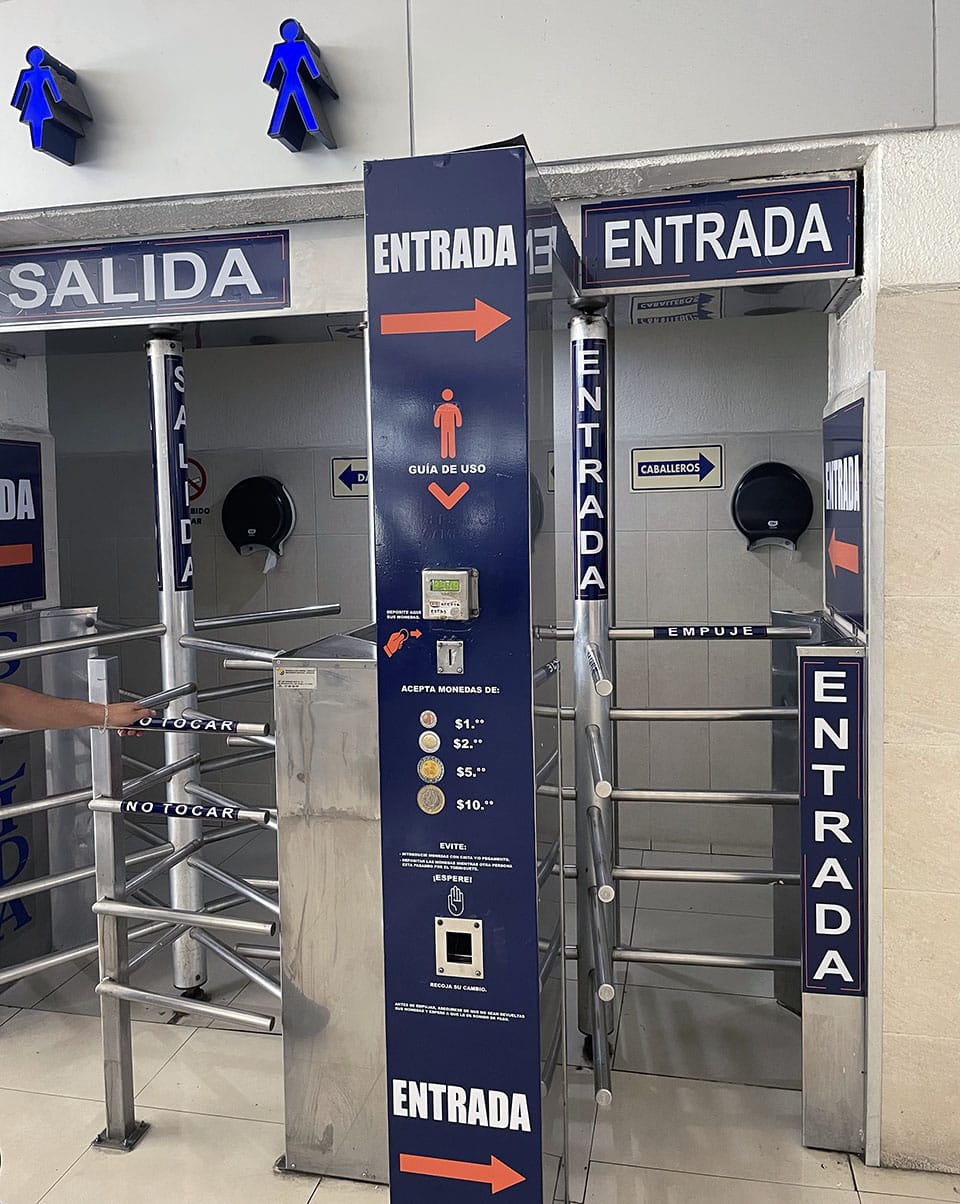

And more often than not, the toilets in Mexico do NOT have seats…We’re not sure why that is—just a quirk of Mexico we’ve gotten used to. But the most common explanation is that they are generally made of cheap plastic, and once they break, there’s rarely any incentive to buy another one. Also, you must buy replacement seats at the “toilet seat store”, not the hardware store, not Home Depot, not even at the store that sells toilets (cuz they don’t sell toilet seats, just toilets!)… so this makes it more onerous to find replacement seats for sure.
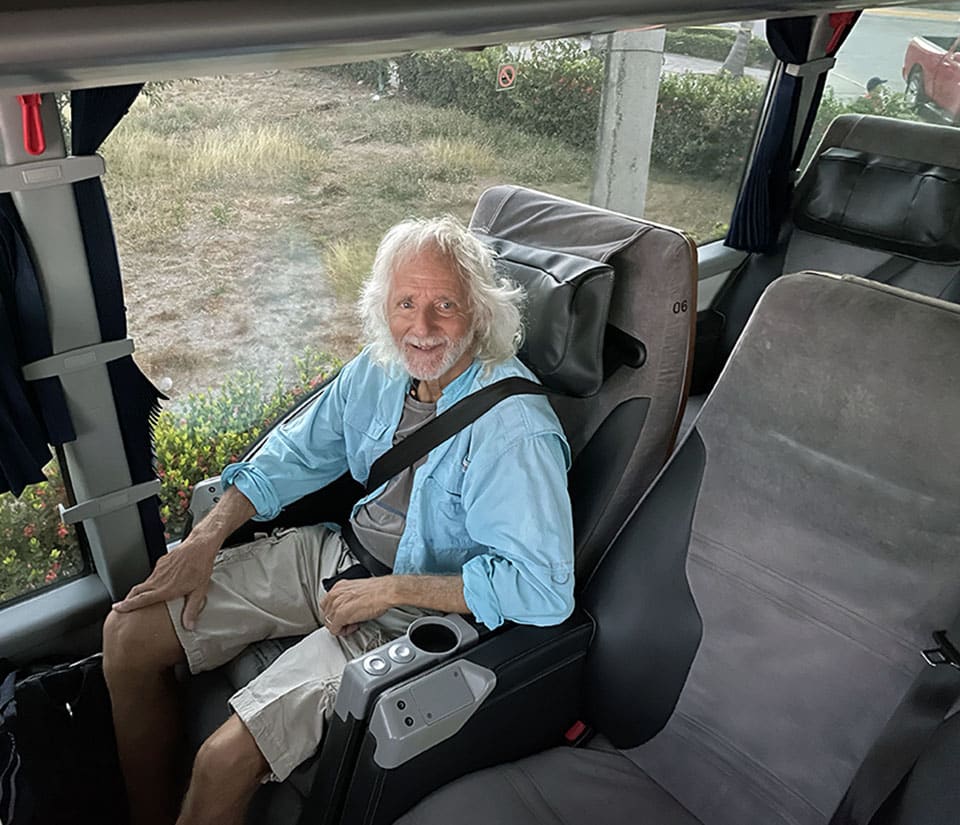
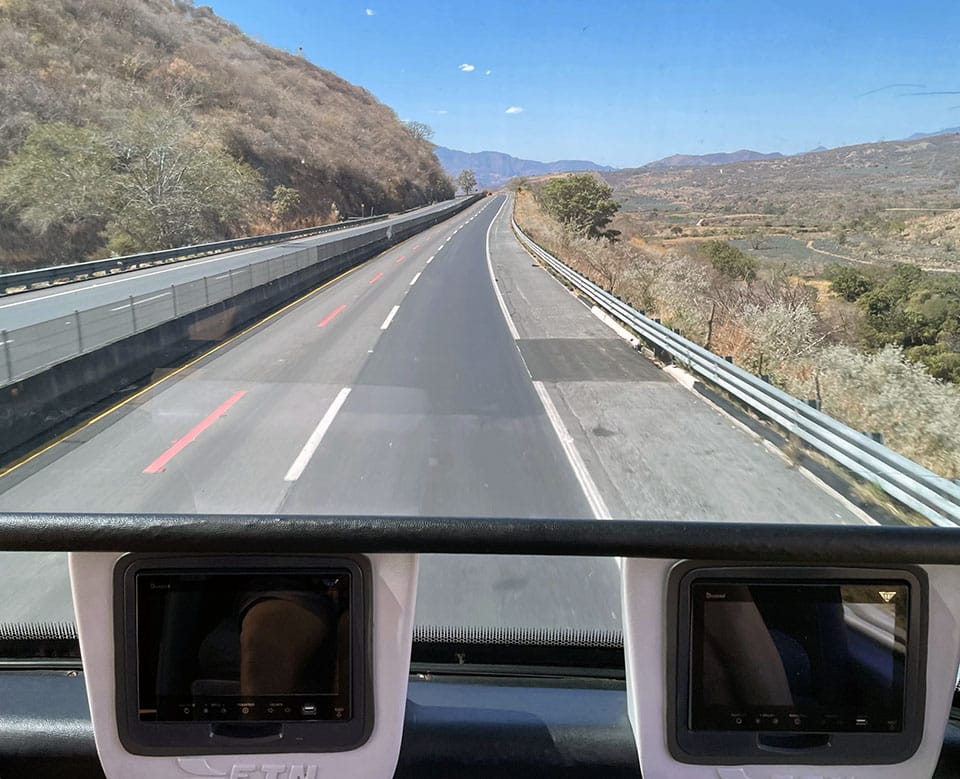
The ETN Tourista buses are double-decker with huge recliner seats, movie screens, and a giant bay-window view—if you’re lucky enough to get front-row seats—which we were! Thankfully, since it was a five-hour bus ride, they also have airplane-style bathrooms on the lower level. These were much nicer and cleaner than the ones inside the bus terminal. But using them while flying down a bumpy, curvy highway is a bit like using the airplane baños during extreme turbulence—so hold on tight!
Once out of Vallarta, we took the new toll highway through the jungle and over the mountains. Sidebar, this “new toll highway” will eventually connect all the way from Guadalajara to Vallarta, and make the five-hour trip more like three or four hours. However, they have been working on this highway since we’ve been in Mexico, eight years already, (and probably as long as anyone can remember!) And every year since we have been here, we keep hearing people say, “It should be opening in a few months”. Having seen some of the construction blasting through mountains along the way, we are pretty sure it is still years from extending all the way to Vallarta at this point. Stay tuned!
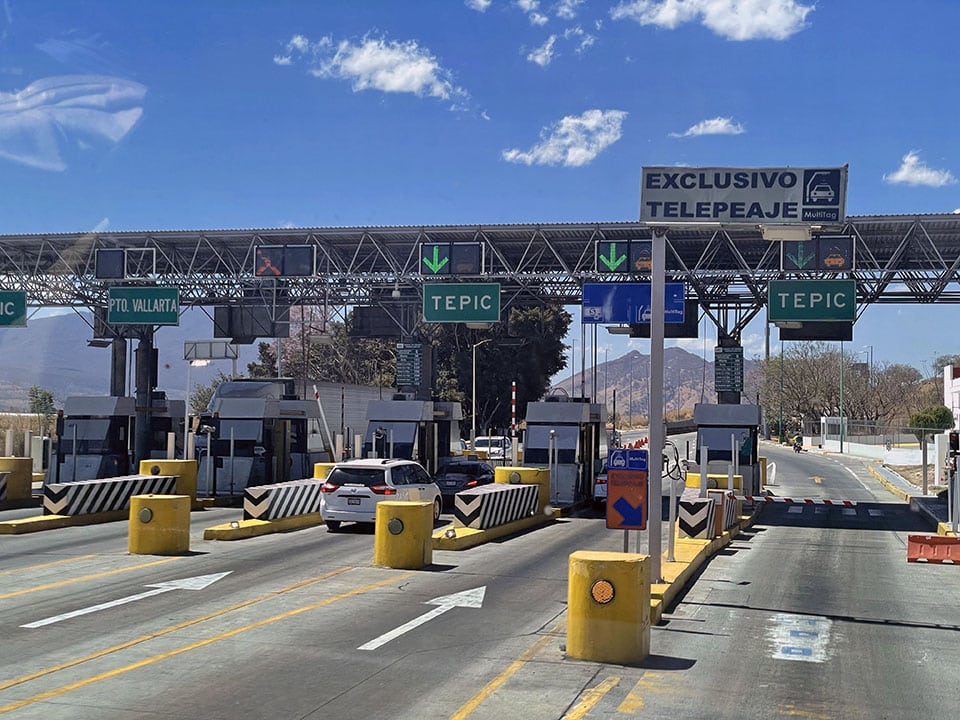
As is common everywhere in Mexico—and more so along windy roads—there were numerous altars along the roadside, marking where people had died in accidents. We saw this large chapel on the side of the road and in the middle of nowhere and wondered about the story behind it, had it been a bus accident, an altar for many people? As it turns out, close to the town of Mesillas, a semi-truck trailer fell off a cliff. At the time of the accident, the driver prayed and promised that if he survived, he would build an altar to bring offerings. And this is what he built.
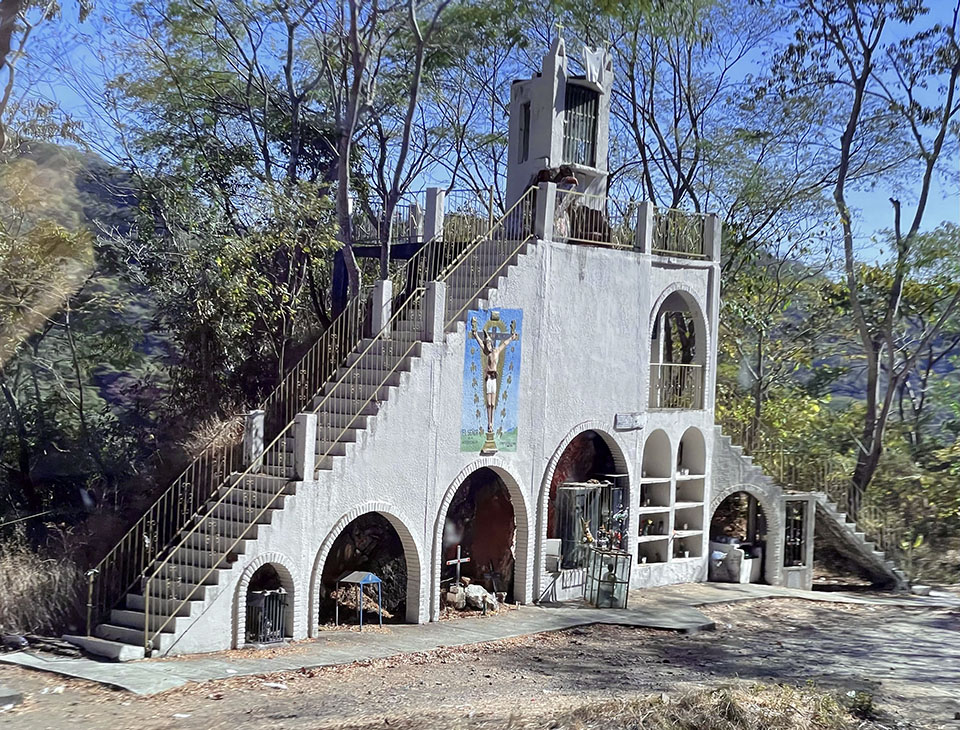
On the other side of the mountains, the terrain changed dramatically. If you’ve ever driven through the Midwestern US and seen corn for miles and miles as far as the eye can see… it was like that. Except on this trip, instead of corn, we saw blue agave everywhere… growing a foot away from the highway, up and down hills, in rows in fields, as far as you could see in every direction.
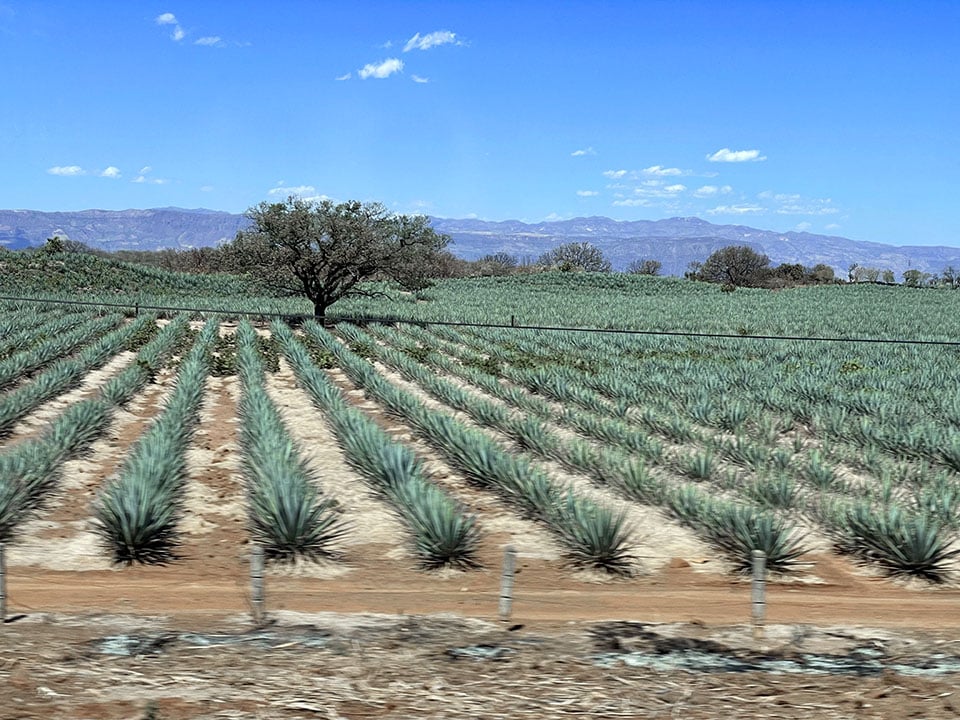
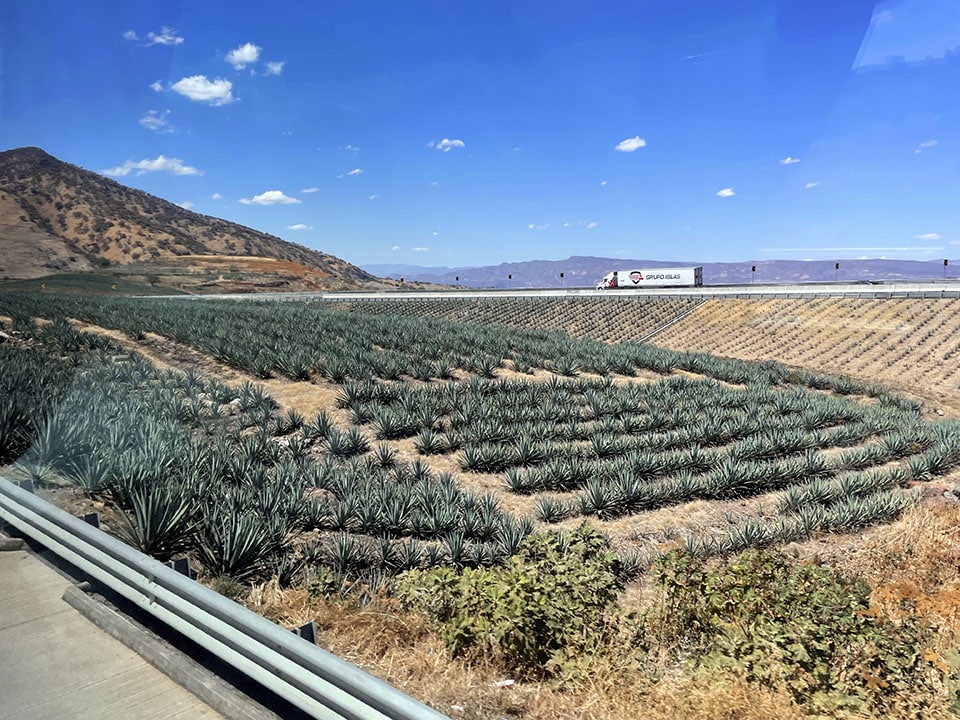
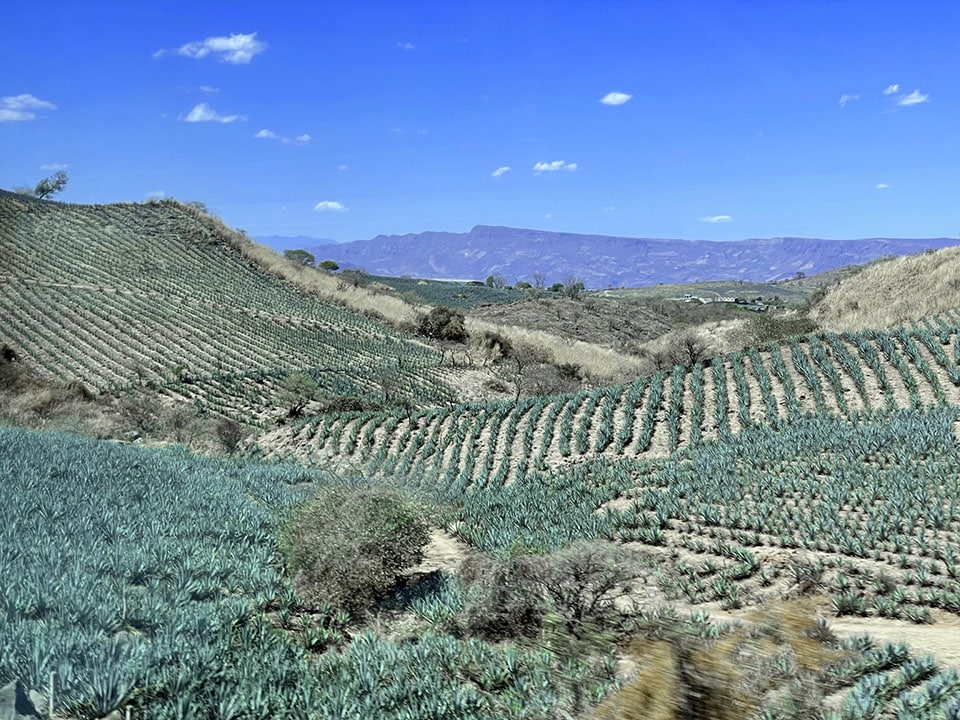
This region also contains the Pueblo Magico town of Tequila. Another town for another visit…as the bus did not stop there. But we’re pretty sure most of the blue agave we saw out the bus windows will make its way to Tequila, to be distilled into its namesake drink, tequila. It’s also interesting to note that Mexican laws state that “tequila can only be produced in the state of Jalisco and in limited municipalities in the states of Guanajuato, Michoacán, Nayarit, and Tamaulipas.” Tequila is recognized as a Mexican designation of origin product in more than 40 countries.
There was so much to see traveling through this area of Mexico we had not yet had the pleasure of visiting. And we thoroughly enjoyed the views along the way. No need to watch movies—on this bus it was all about the views out the window (or immediately below our window!)—which sometimes included crazy traffic situations, street vendors selling window shades along the side of the highway, or pickup trucks full of people and bikes.

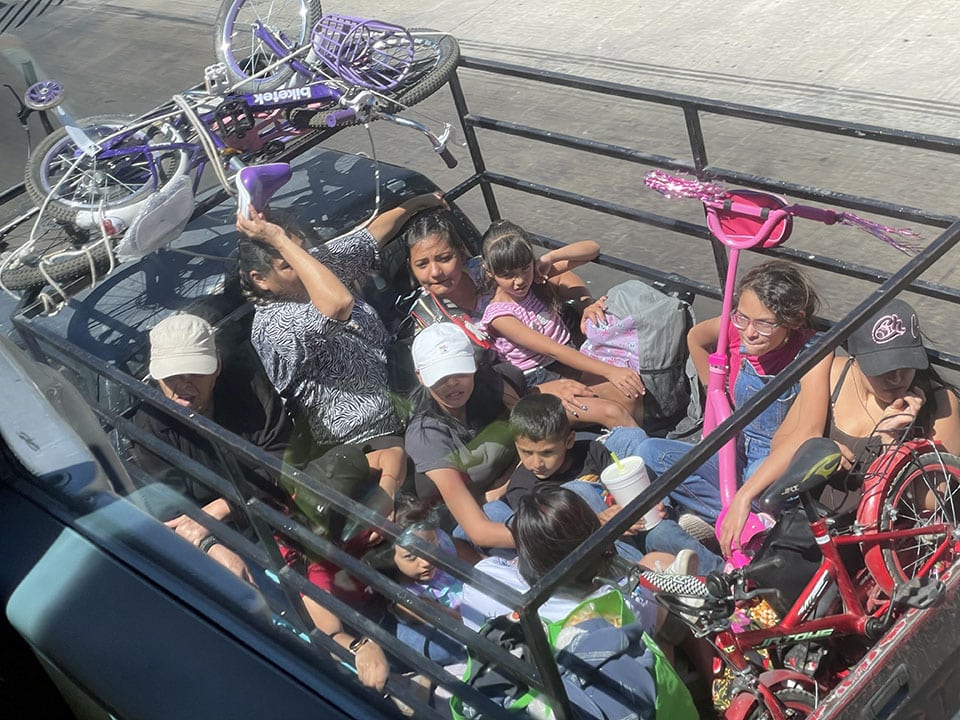
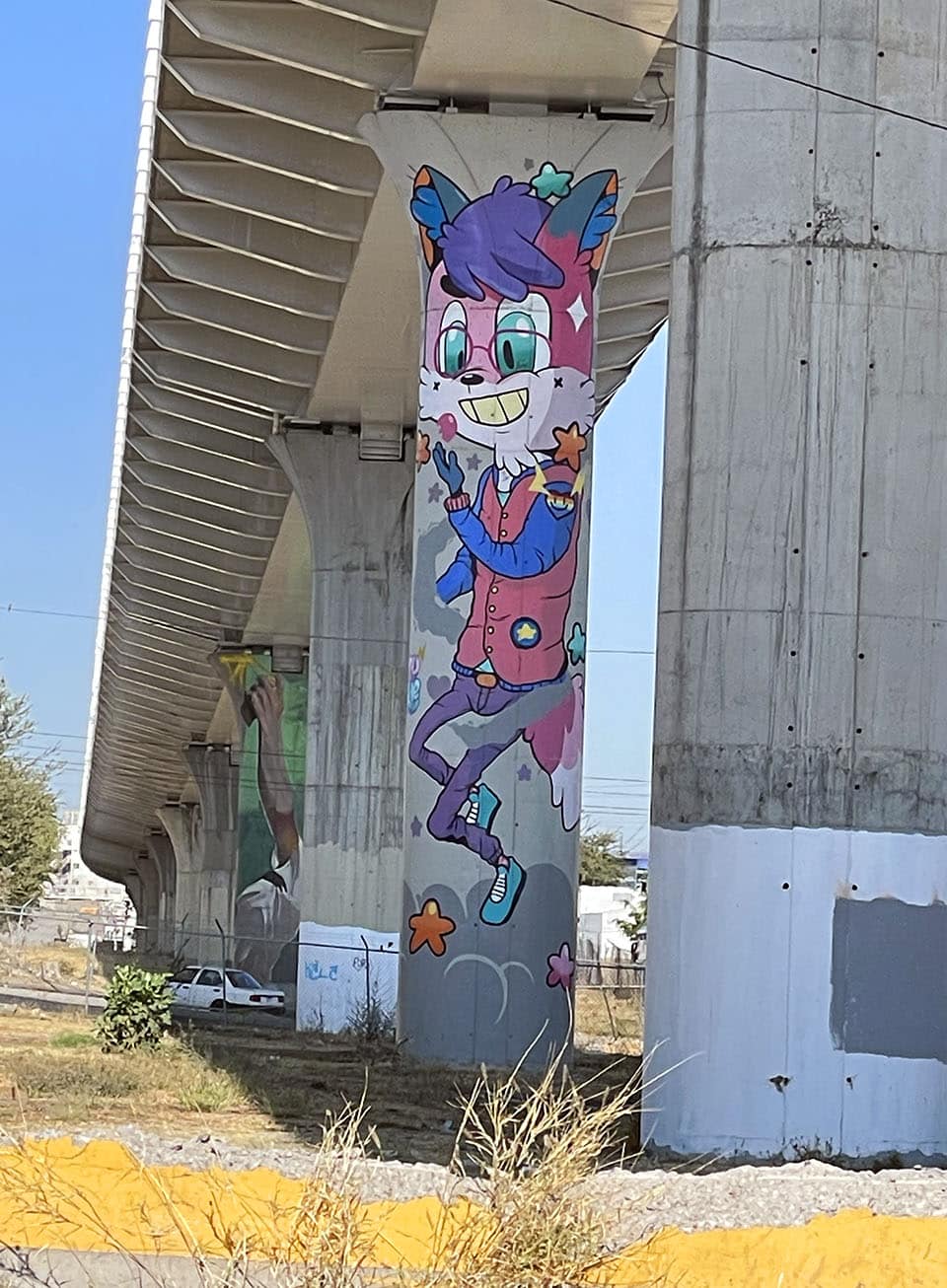
And we’re still wondering how the graffiti artist got up/down the 20′ tall pillars of the light rail track to paint this gem…ladder at night or rappelling from the top? The light rail runs by the very modern “new bus station” outside Guadalajara to the east, between Tlaquepaque and Tonla. Once off the bus, we grabbed an Uber for $600 pesos with tip ($30 US) for the hour’s drive south to Lake Chapala and Ajijic. Along the drive, we were treated to so many vibrant purple jacaranda trees blooming throughout the whole Lake Chapala area.
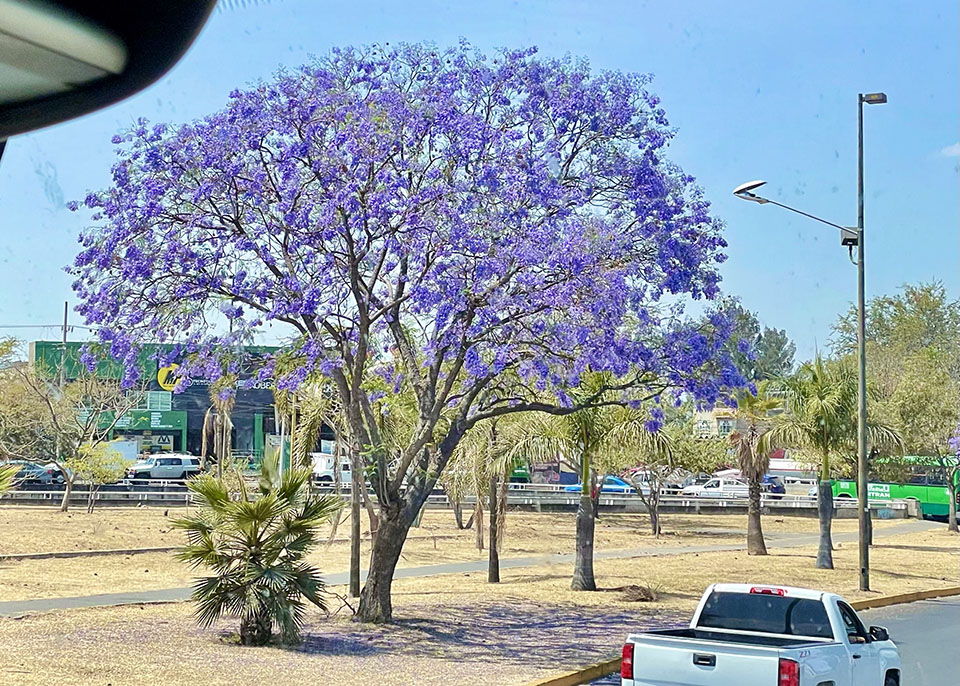
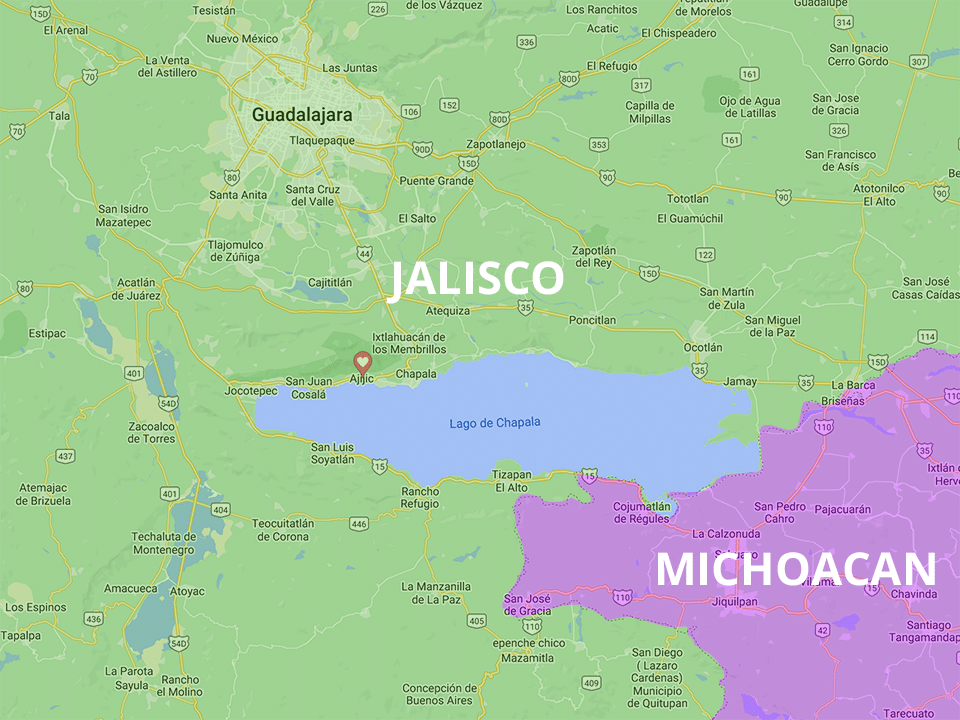
Lake Chapala is the largest freshwater lake in Mexico. At an elevation of 5,000 feet, it is 50 miles in length from west to east, and almost 8 miles across from north to south (an area of 400 square miles, or 103,500 hectares). And it is mostly bordered by the state of Jalisco except for the southeast corner, which is in the state of Michoacan.
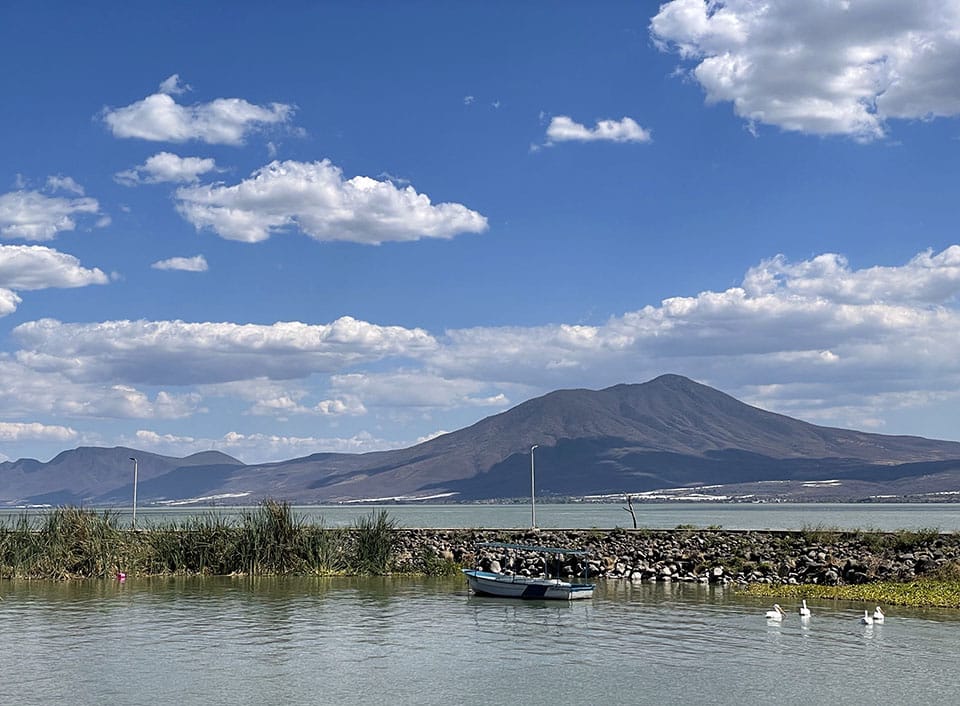
Ringed by volcanic mountains, this rich agricultural area grows most of the berries in Mexico. And on the hills across the lake from Ajijic, you can see many berry farms under white shade covers, which also help keep the birds out. Unfortunately, the runoff from all this agriculture, (as well as sewage from some of the surrounding towns), has polluted the lake to the point that it is not recommended to swim or fish in this once-pristine lake. YUCK! Sadly, you still see some local Mexicans fishing.
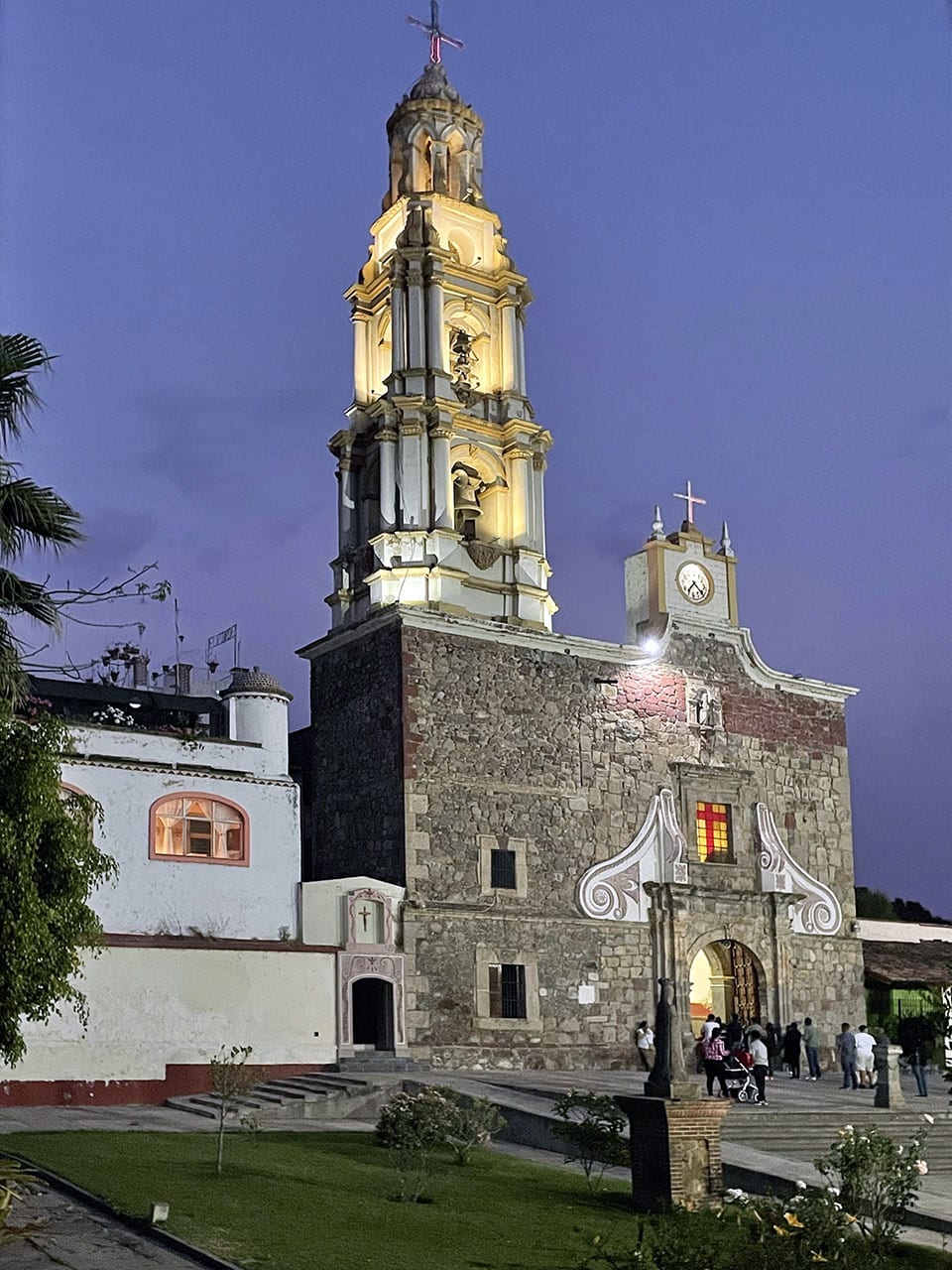
So a little primer on the history of Ajijic, Jalisco, from the Mexican government website…
Ajijic is one of the oldest towns in Mexico, founded in 1531. The name Ajijic is derived from the Nahuatl Axixic which means “where the water is spilled” or “where the water springs up”. Long before the Spanish conquest, a small Nahuatl community occupied this area on the shores of Lake Chapala and they named this place—according to their mythology—one of the four cardinal points, in reference to the climate and powerful energy of the region. So due to this rich history, we were looking forward to seeing more of the Lake Chapala region.
After six hours of travel, we arrived in Ajijic, and were thrilled to see Patti and Frosty again—it had been several years—way too long! And their Mexican Hacienda home is absolutely beautiful. It is one block from the town square and it turns out to be one of the oldest homes in Ajijic—built with original thick adobe walls, likely dating back about 150 years.
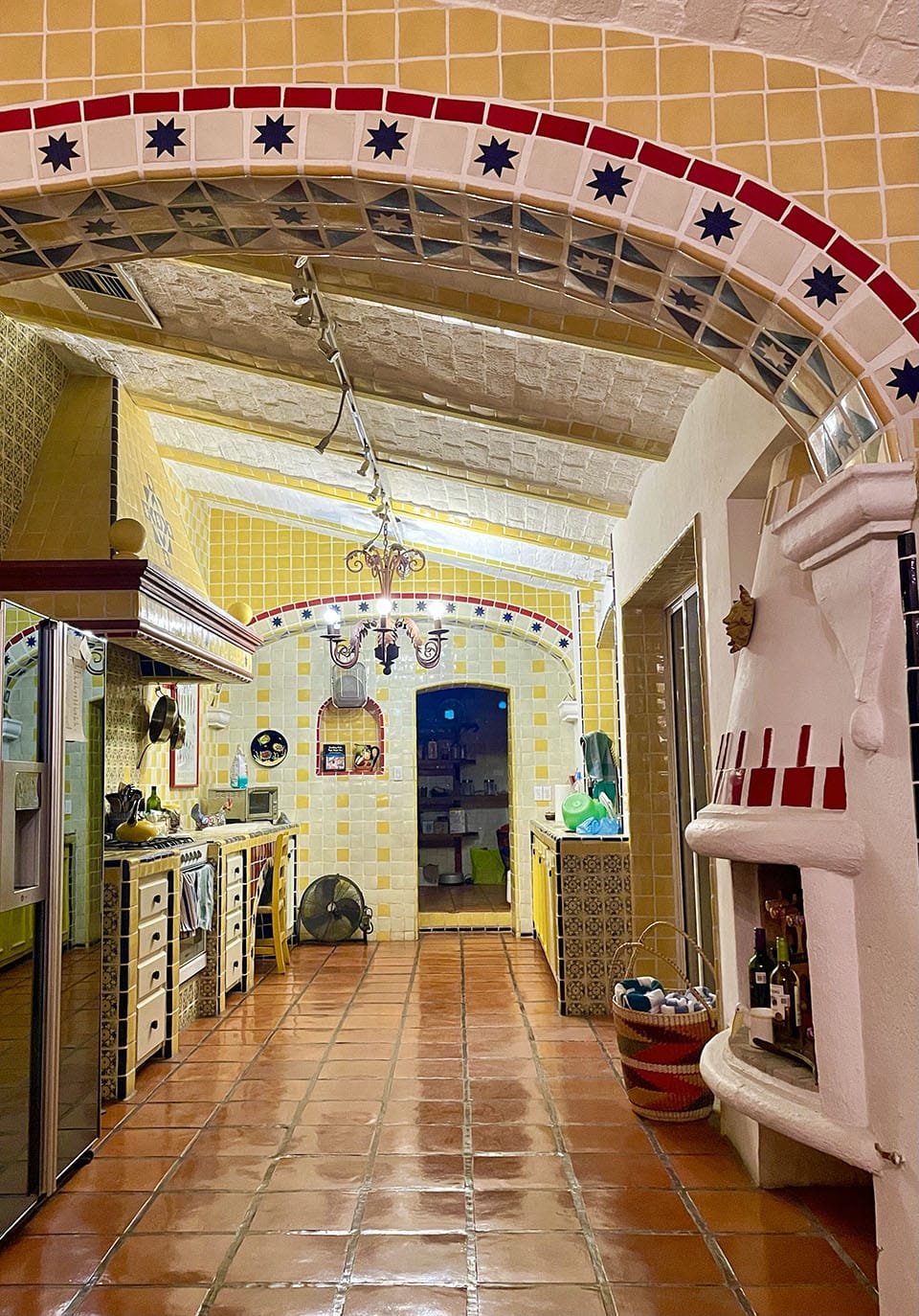
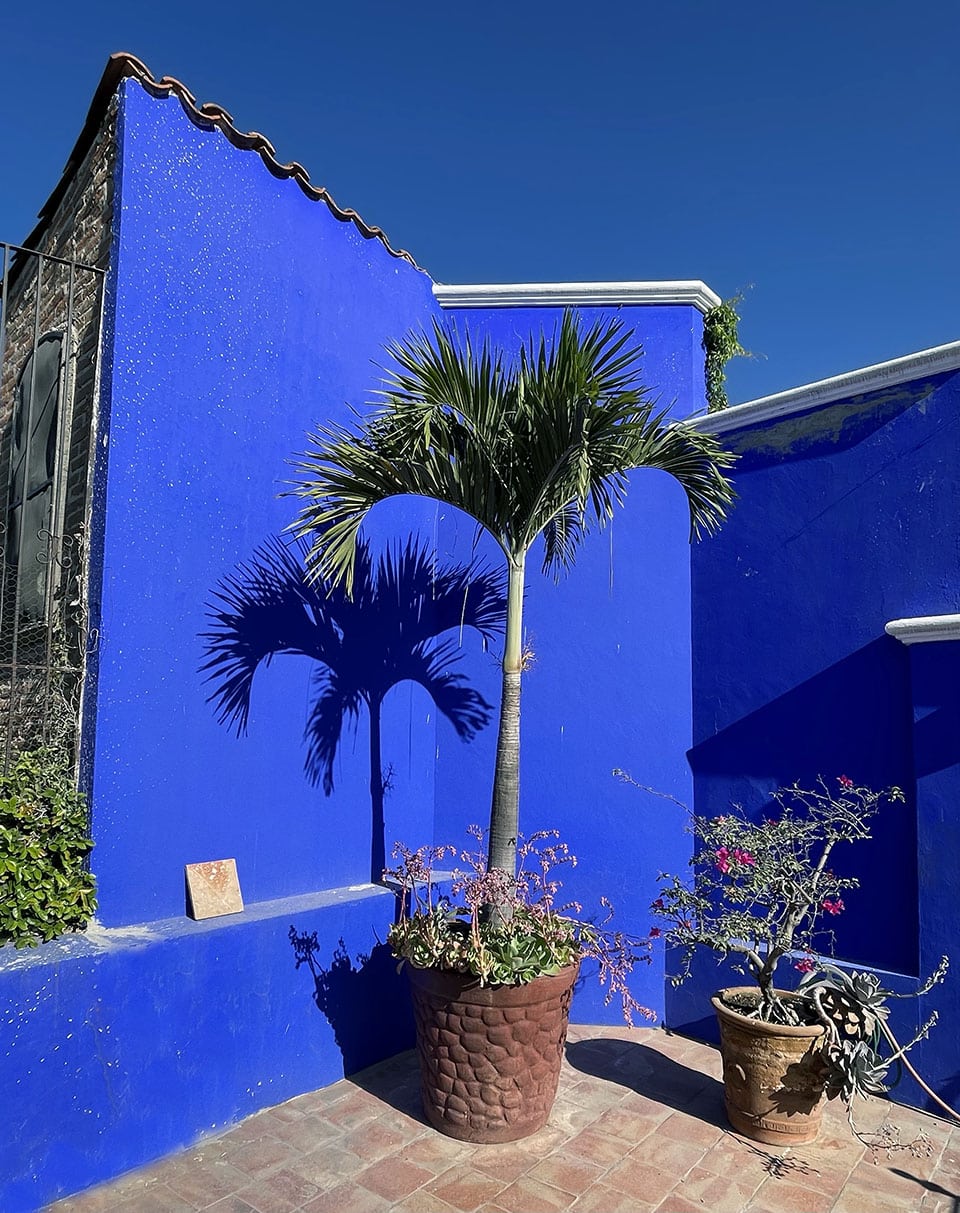

Ajijic was just established as a Pueblo Magico in 2020, and you can see why. This cute Mexican town is so colorful and artsy, with gorgeous murals covering the walls all over the central area. And we loved walking around Ajijic taking in all the amazing art, architecture, and culture. One mural in particular on the front of the elementary school wall intrigued us… see below.
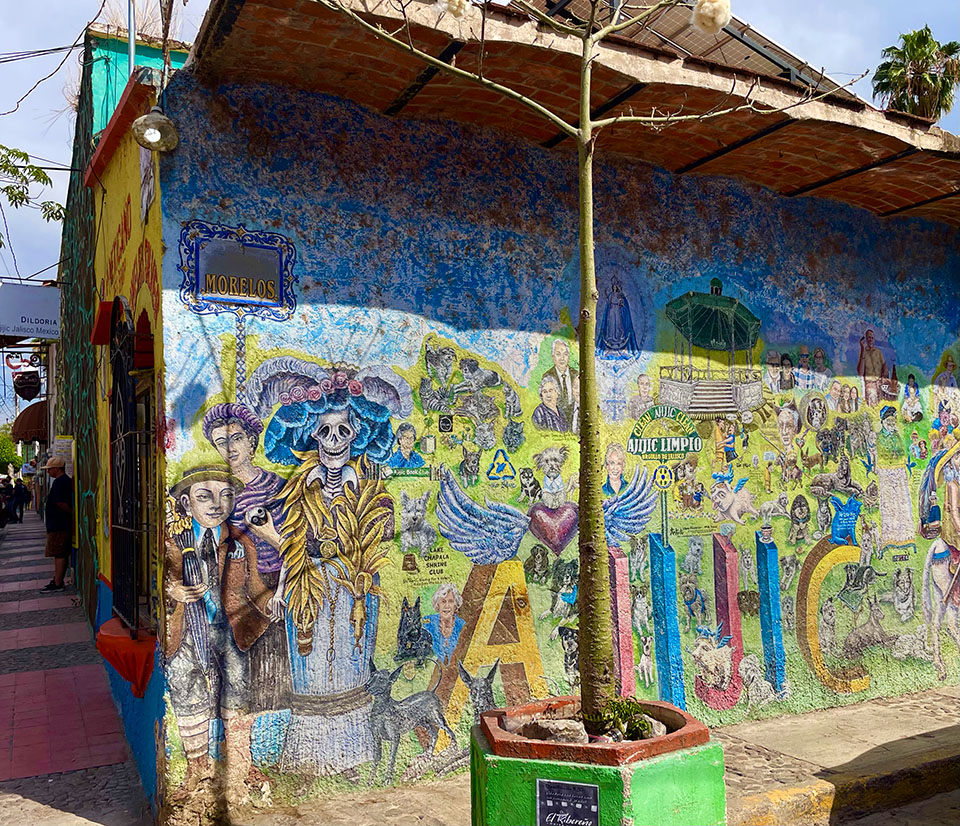

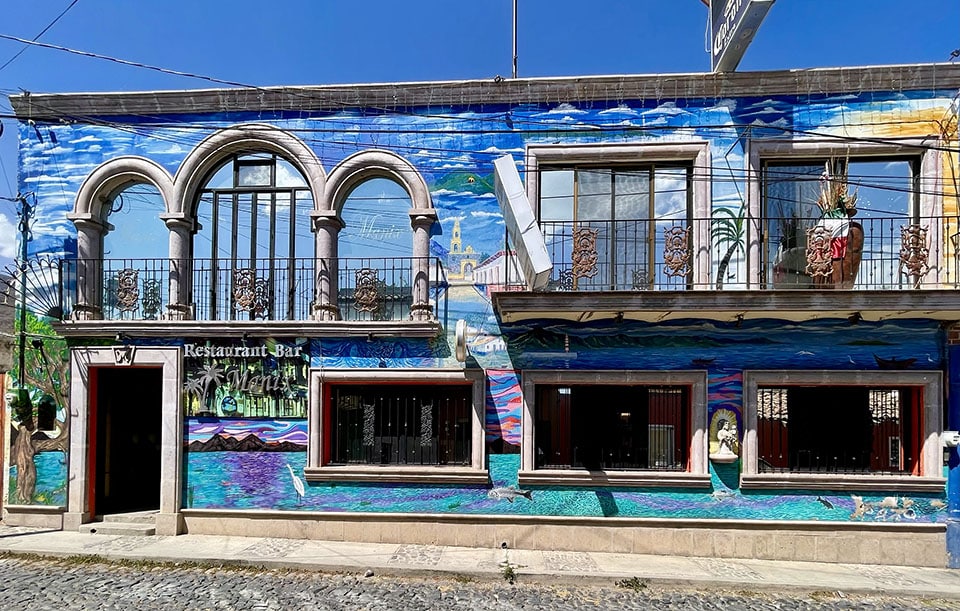
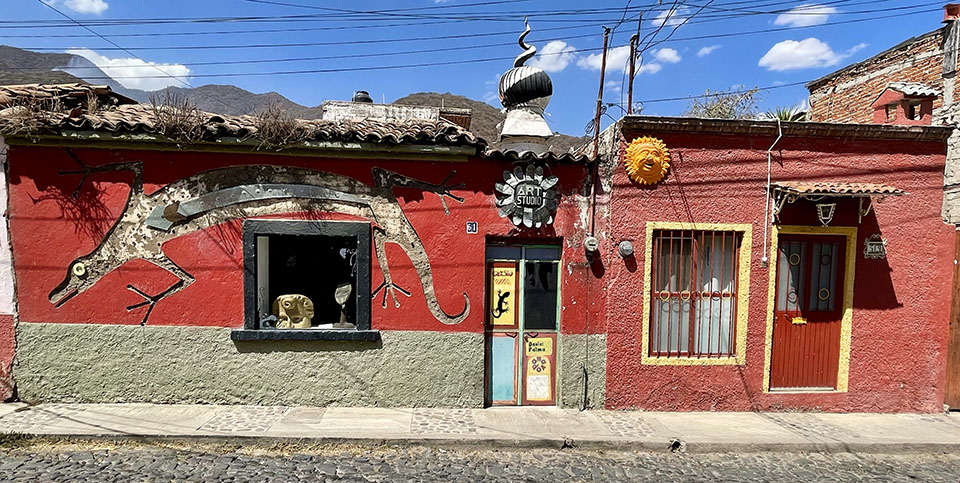
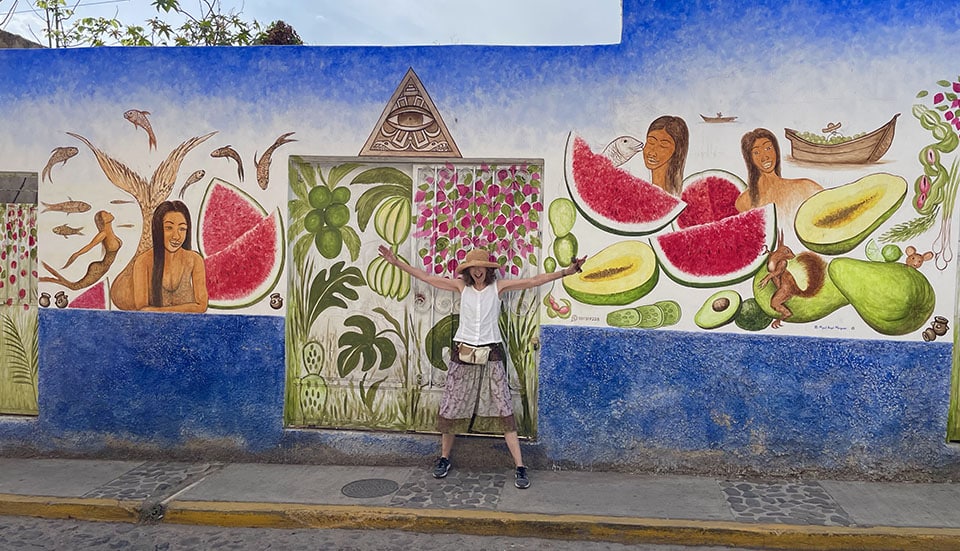
Kirk and Patti helping give scale to some of these beautiful wall murals. So many different styles and colors of wall art throughout this charming town of Ajijic.
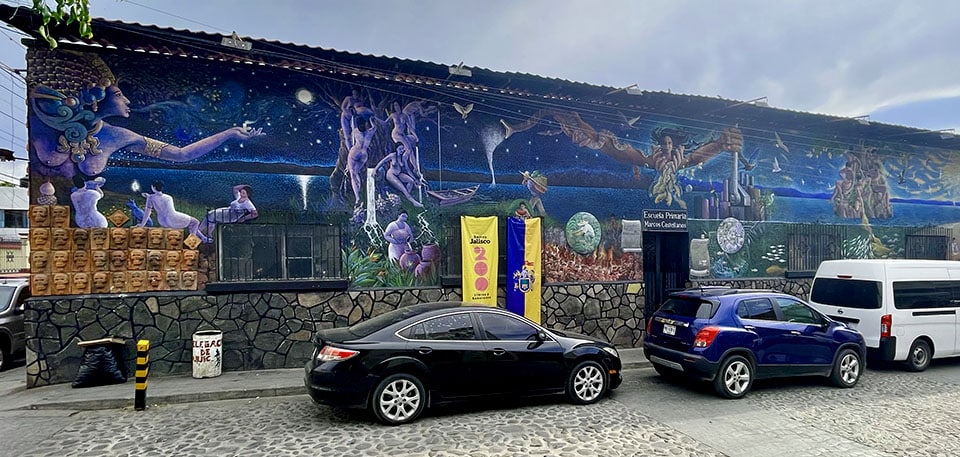
We especially LOVE this beautiful mural decorating the front of the Ajijic elementary school, “La Magía de Ajijic,” by local artist Efren González, “showing natural, human and cultural aspects of life in his hometown”. Can you IMAGINE the uproar if this art was painted on an elementary school in the US (not to mention the skull tiles on the corner)? LOL, priceless!
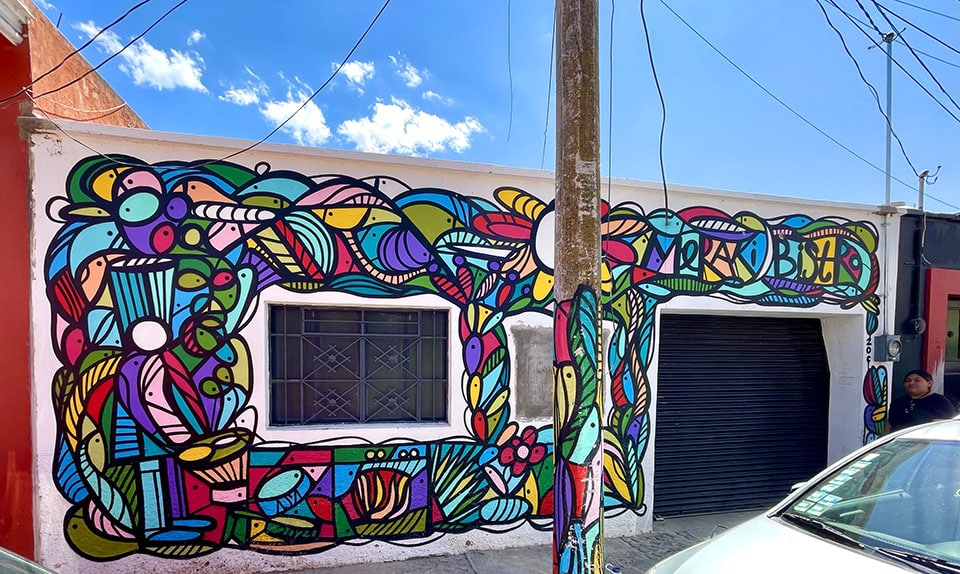
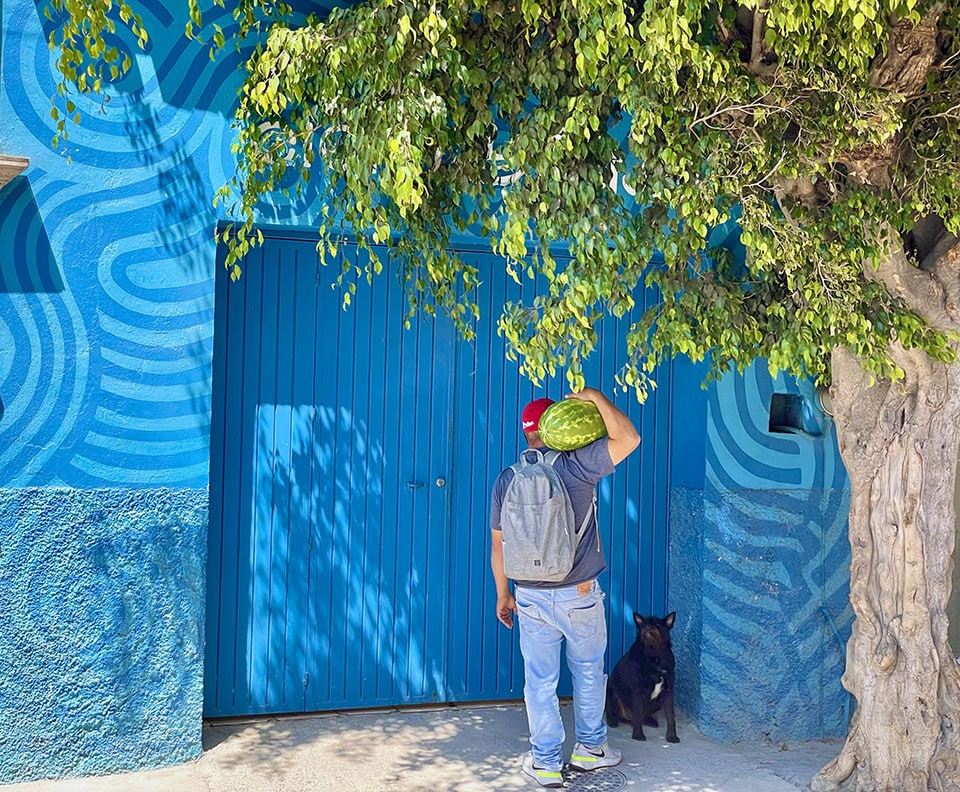

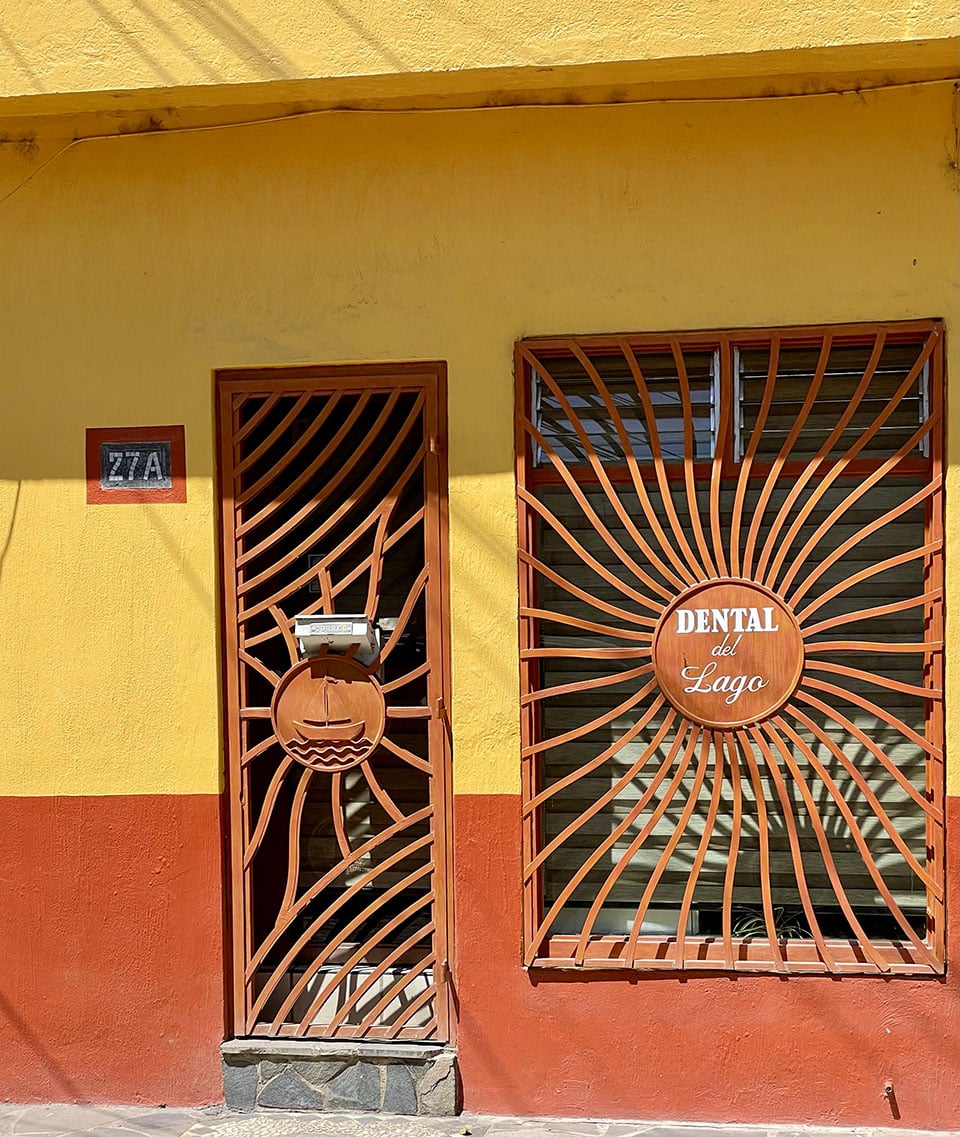
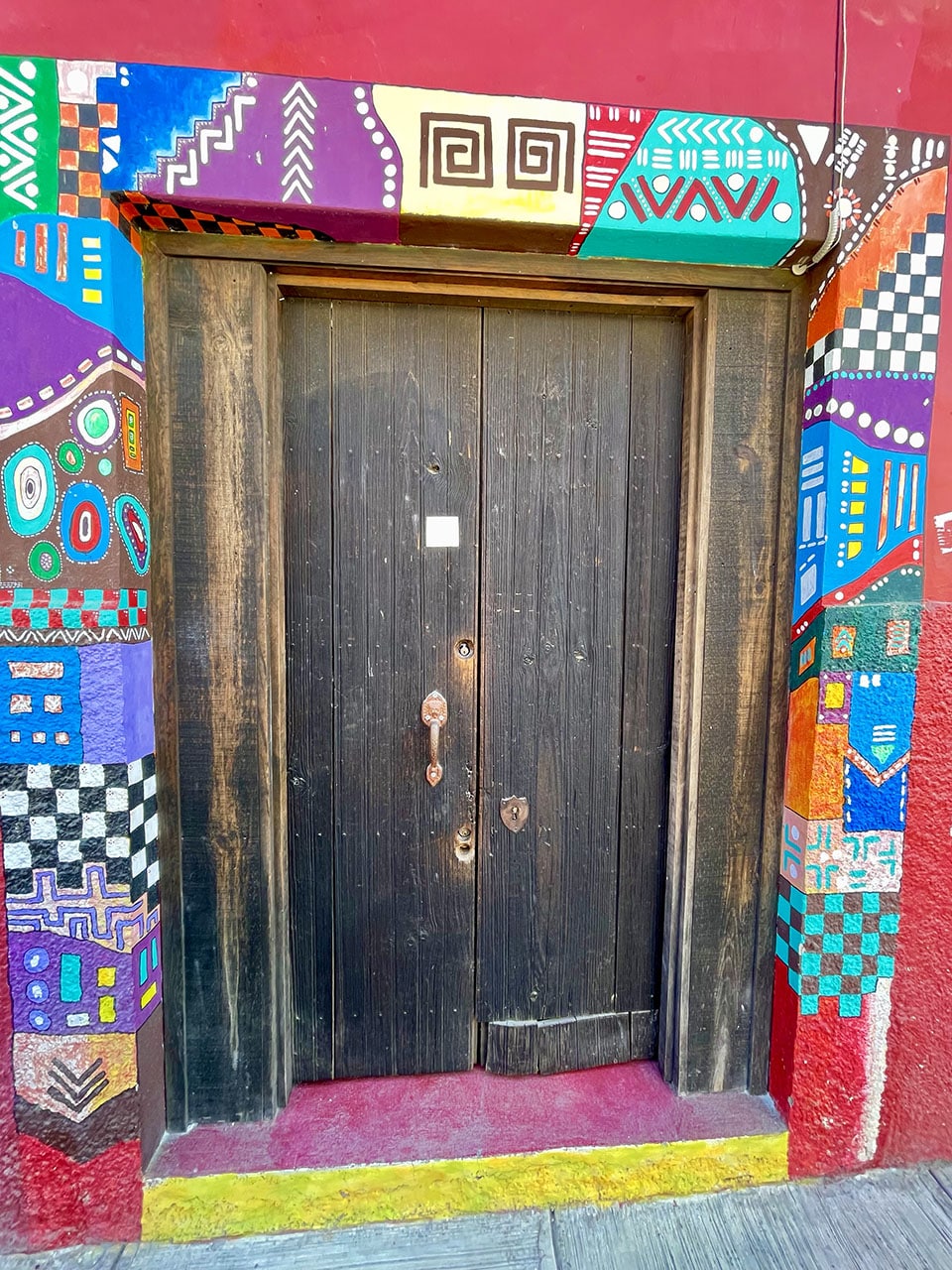
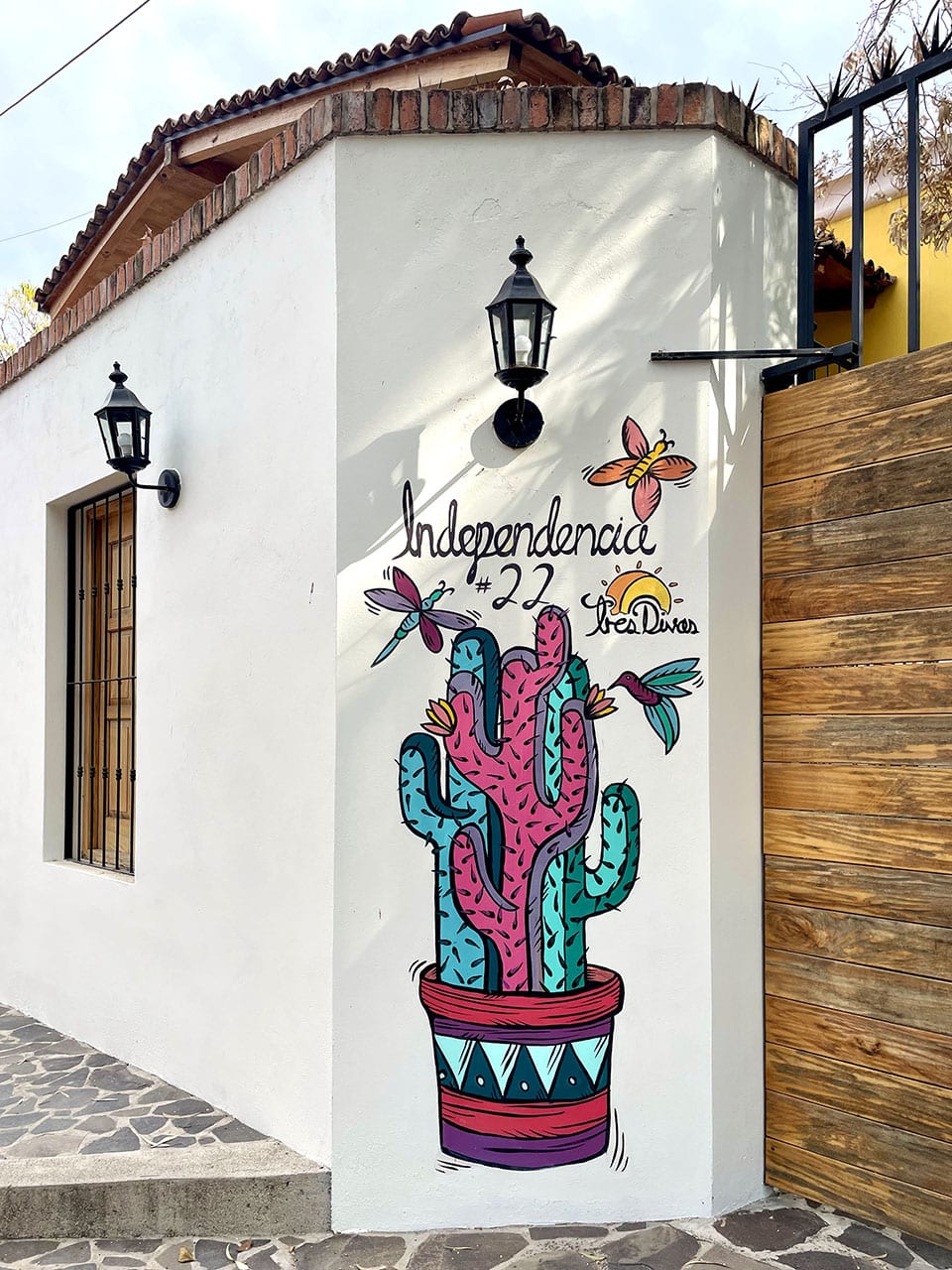
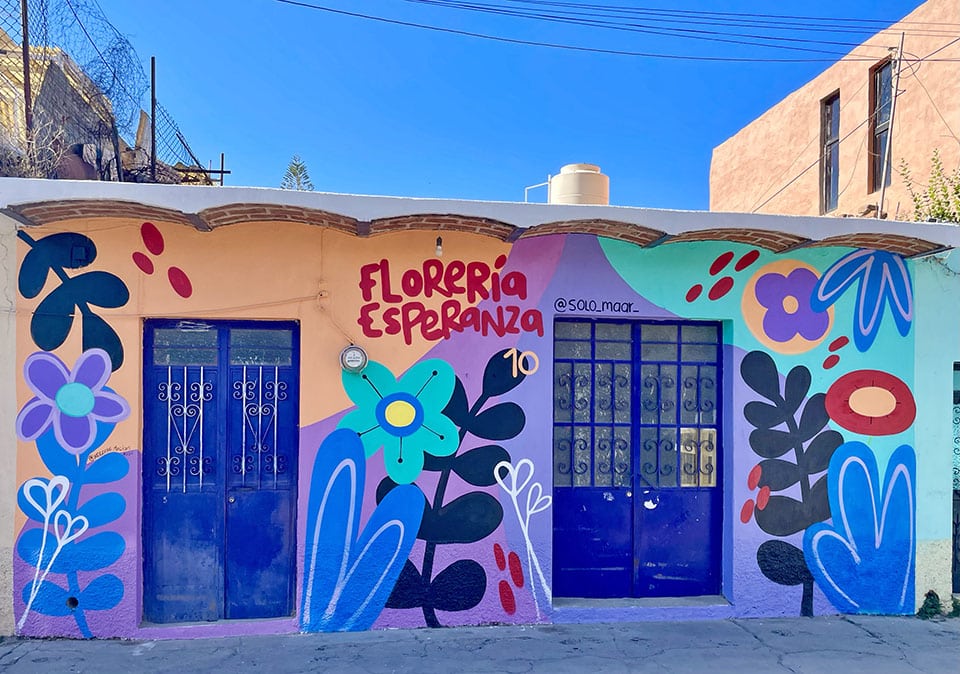
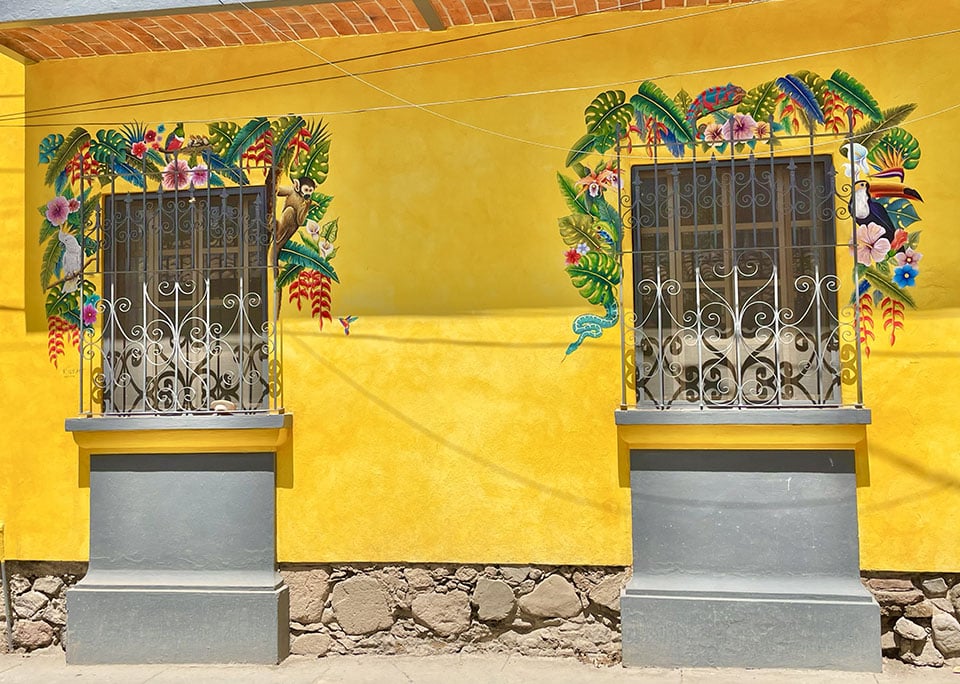
Love how they painted the phone pole to match the wall… and the many unique door and window treatments around Ajijic too…
We also enjoyed hearing Frosty, a fabulous blues guitarist, play a couple of songs at an open mic one afternoon, along with other musicians, poets, and storytellers—surrounded by nature in the middle of town. It was so much fun to hear him play again. Back in our Seattle cruising days, we all used to raft our sailboats up together, and Frosty was one of several musicians who regularly jammed for us, while Patti sang. Those were the days, as some of you remember!
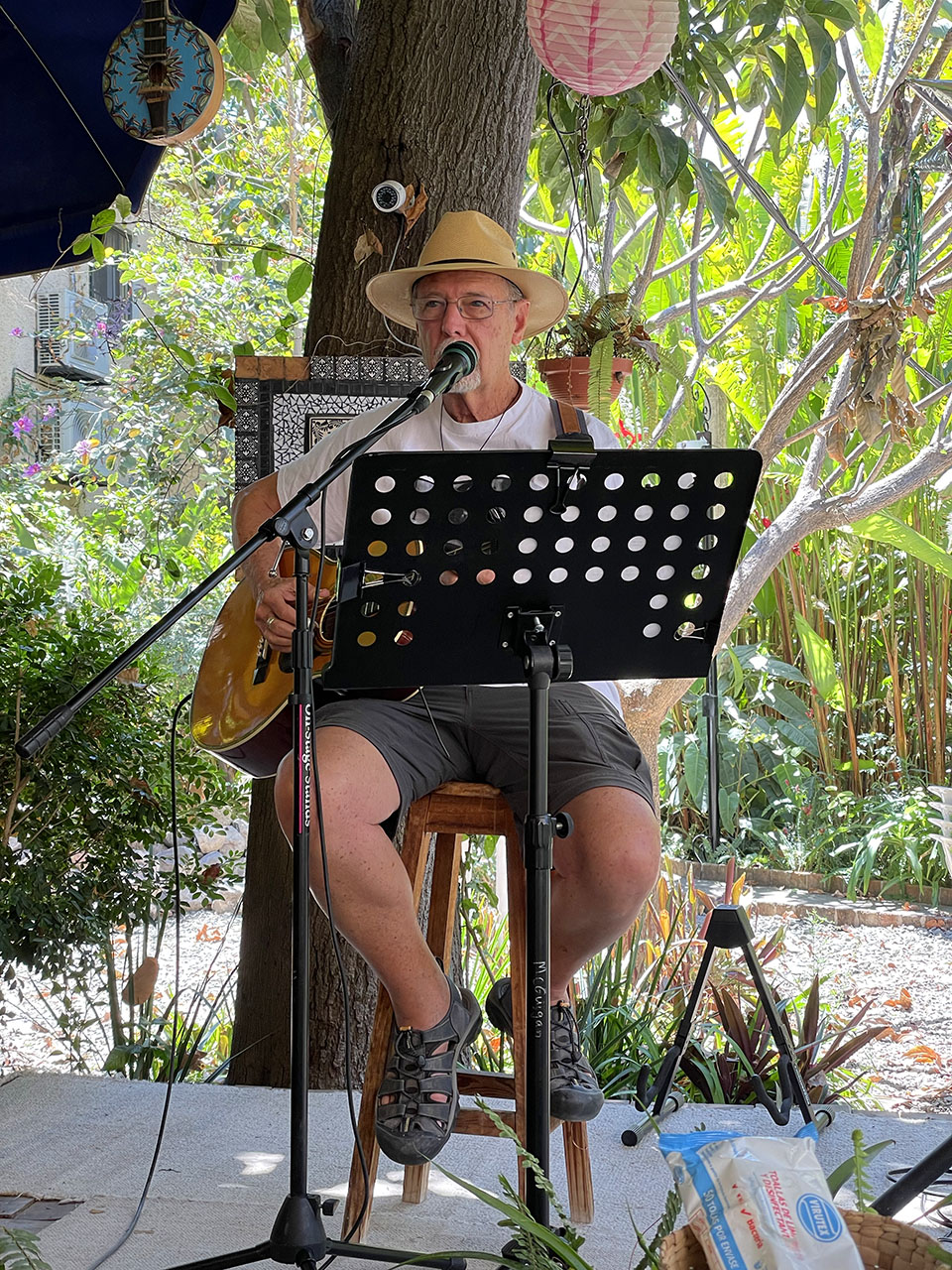
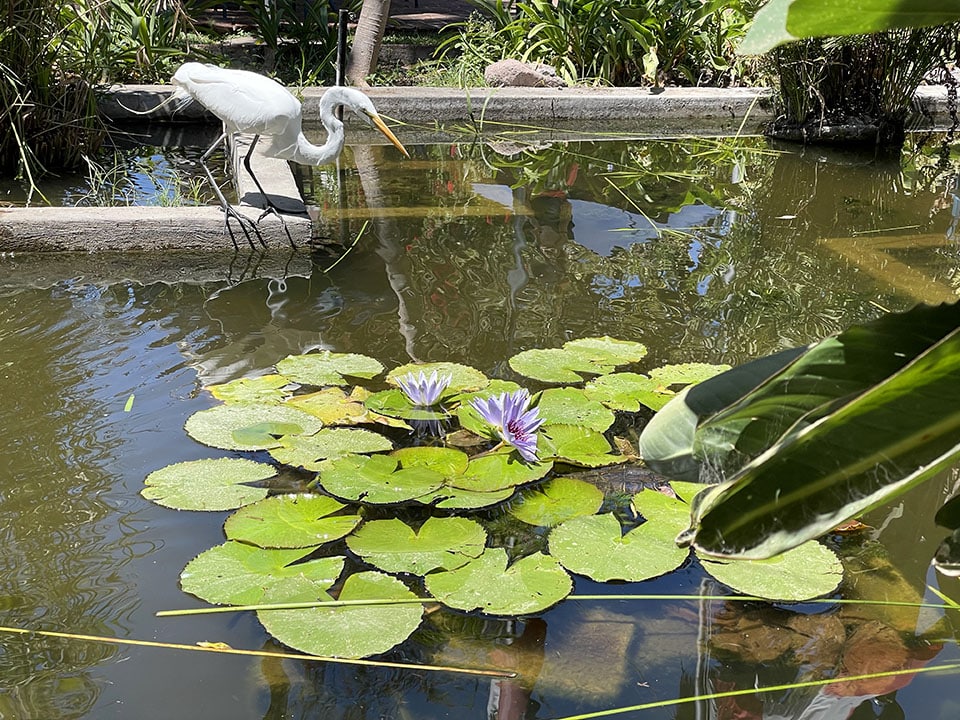
And our friend Annabelle had recently moved from Puerto Vallarta to Ajijic, so we met up with her to check out a small art fair one afternoon. And there we found this lovely hand-painted wood box (about 12” in diameter) with a carved jaguar head (it reminds us of Tosh!)—anyone else see the sailboat in the wood grain? We didn’t notice it until we got home—this box must have needed to live aboard!
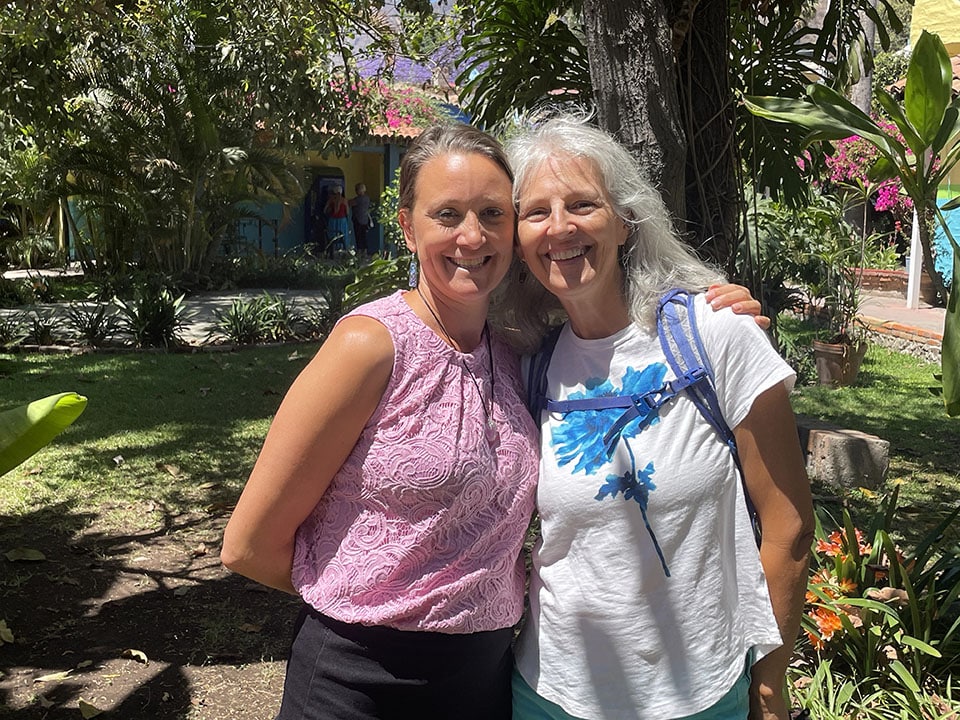
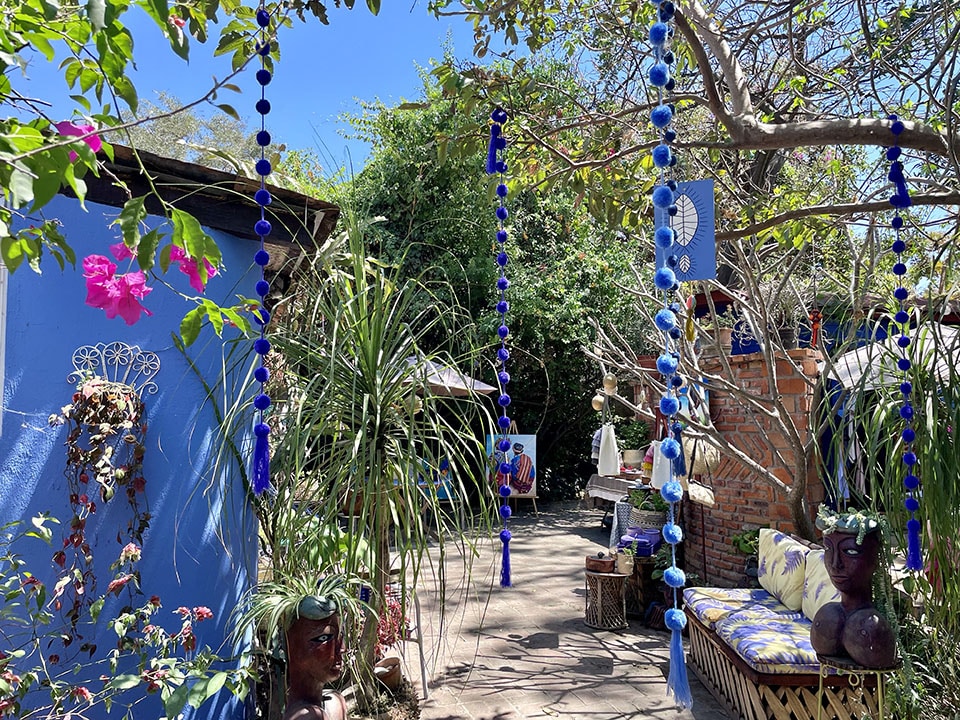
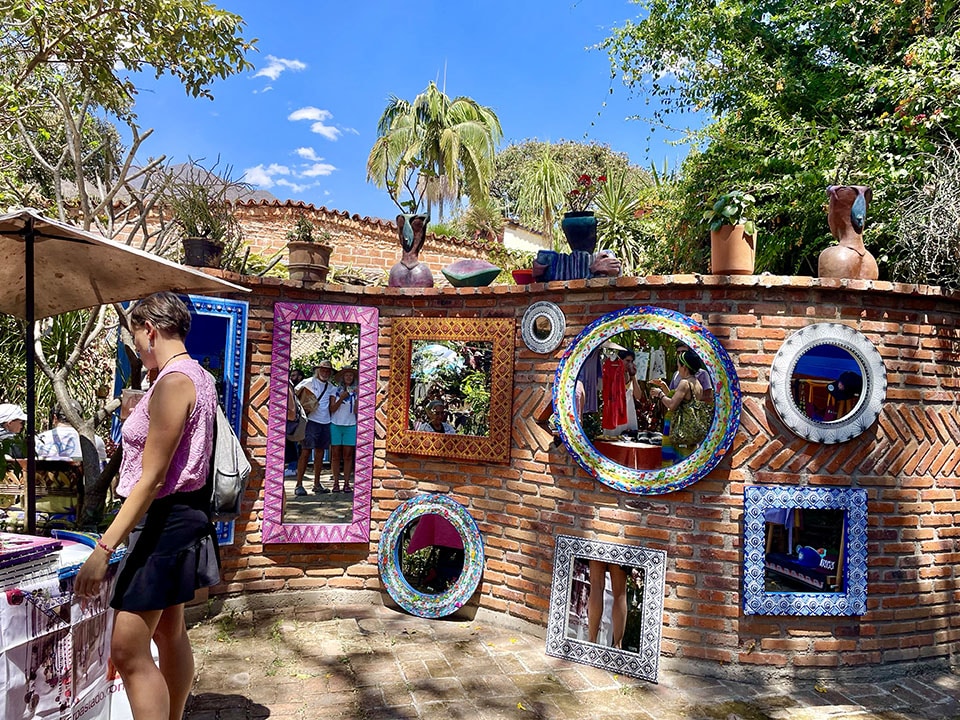
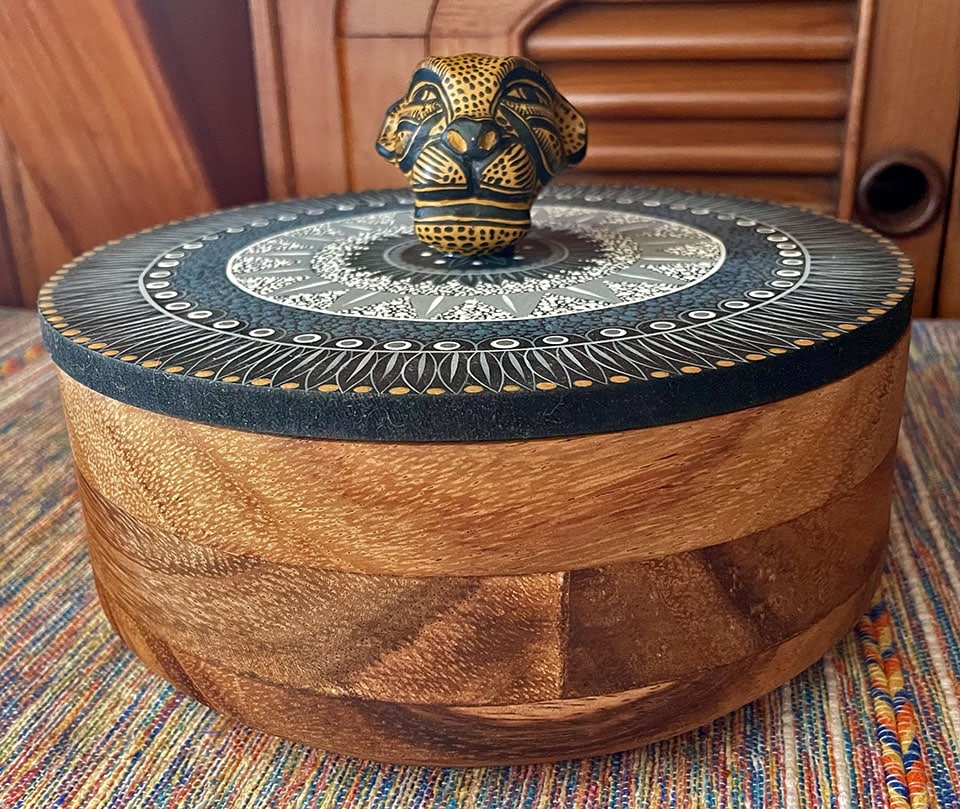
The box is made from parota wood from the huanacaxtle (“juan-a-cox-tle”) tree. It’s also called a “monkey-ear tree” due to its uniquely shaped seed pods which are about the size of your palm. These giant trees are native to tropical regions of the Americas, from central Mexico south to northern Brazil and Venezuela, and can grow to about 65’ tall with trunks measuring 10-12’ in diameter, and the canopy extending double the height (as you can see in this photo below). It’s a semi-hardwood, impervious to termites, so parota wood is commonly used in Mexico to build beautiful furniture (like this coffee table below) as well as wooden door and window frames. And they make fantastic shade trees and climbing trees and are often found in city parks around this region of Mexico as well.
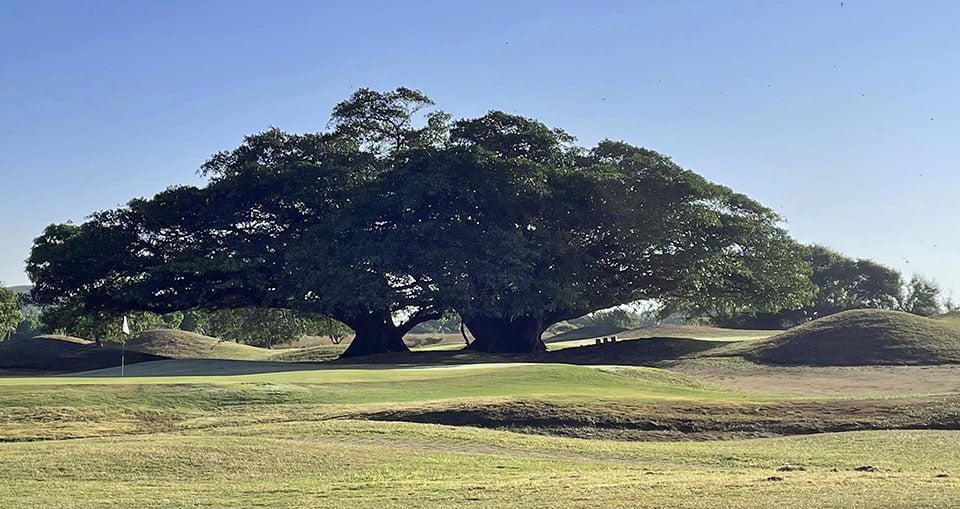
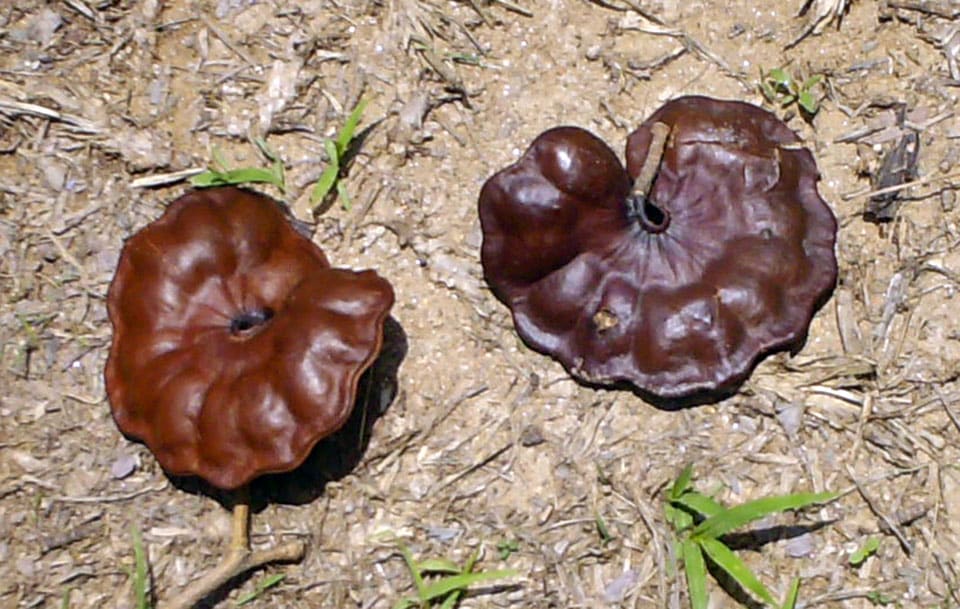
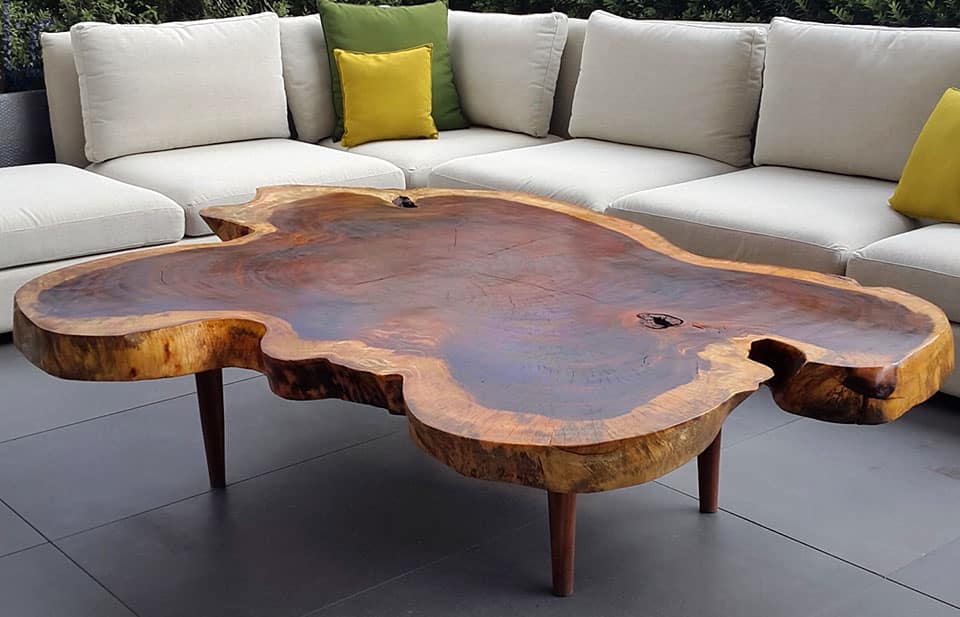
One afternoon Patti & Frosty took us to the town of Lake Chapala to the east of Ajijic, and we walked along the Malecon waterfront there. And another afternoon we went to the town of Jocotepec (Huh-coat-a-peck) to the west of Ajijic and had a delicious lunch at El Rincon de Frida (“Frida’s Corner”) cafe. They are known for their huge, artistic salads, and the café is also a tribute to Frida Kahlo with memorabilia everywhere.
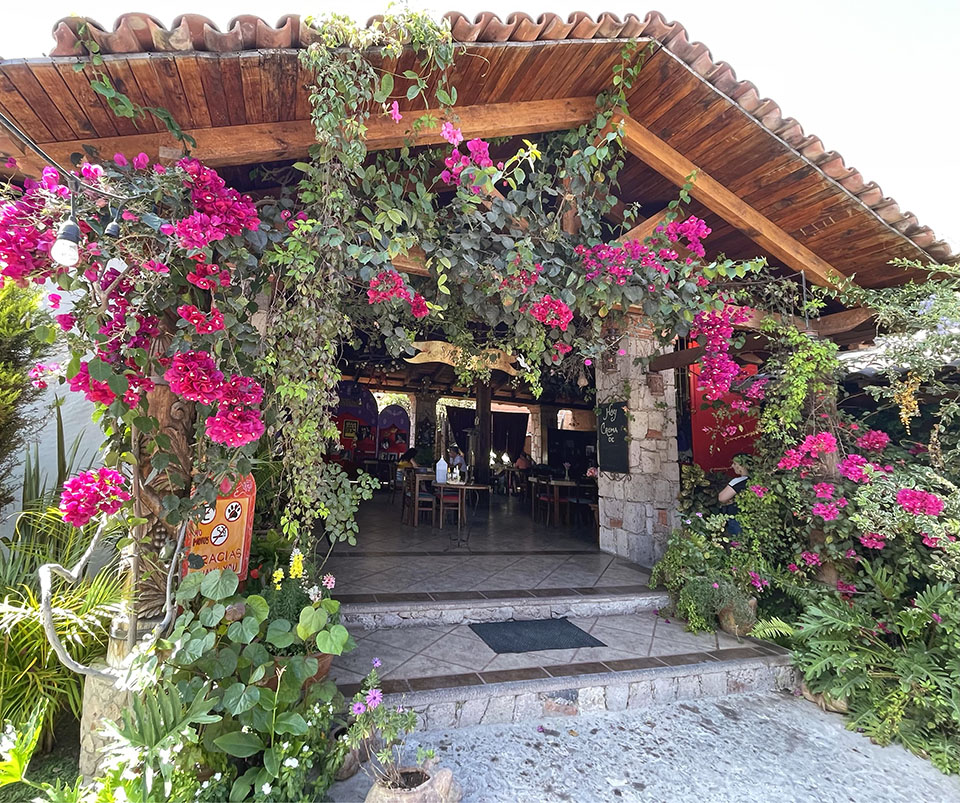
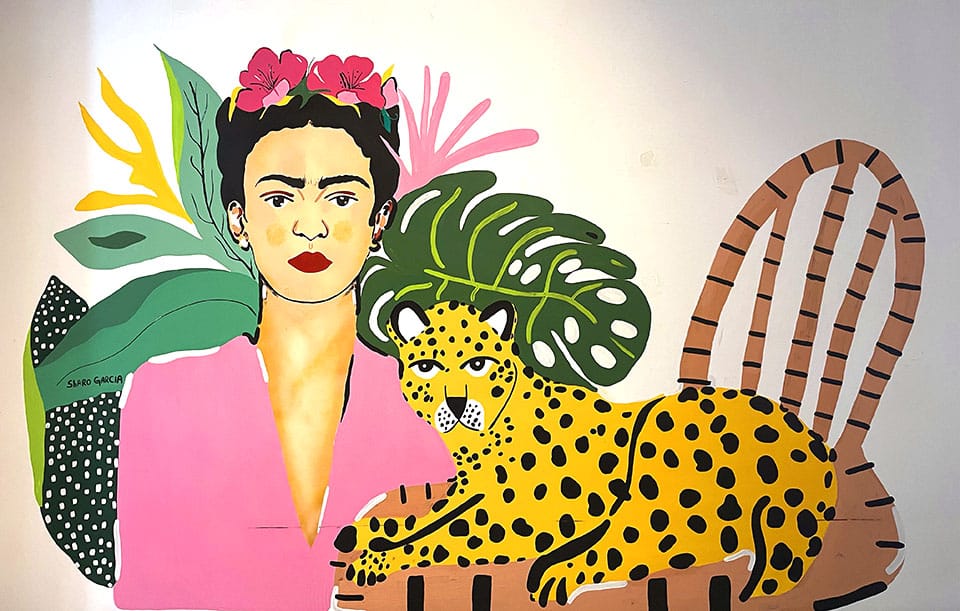
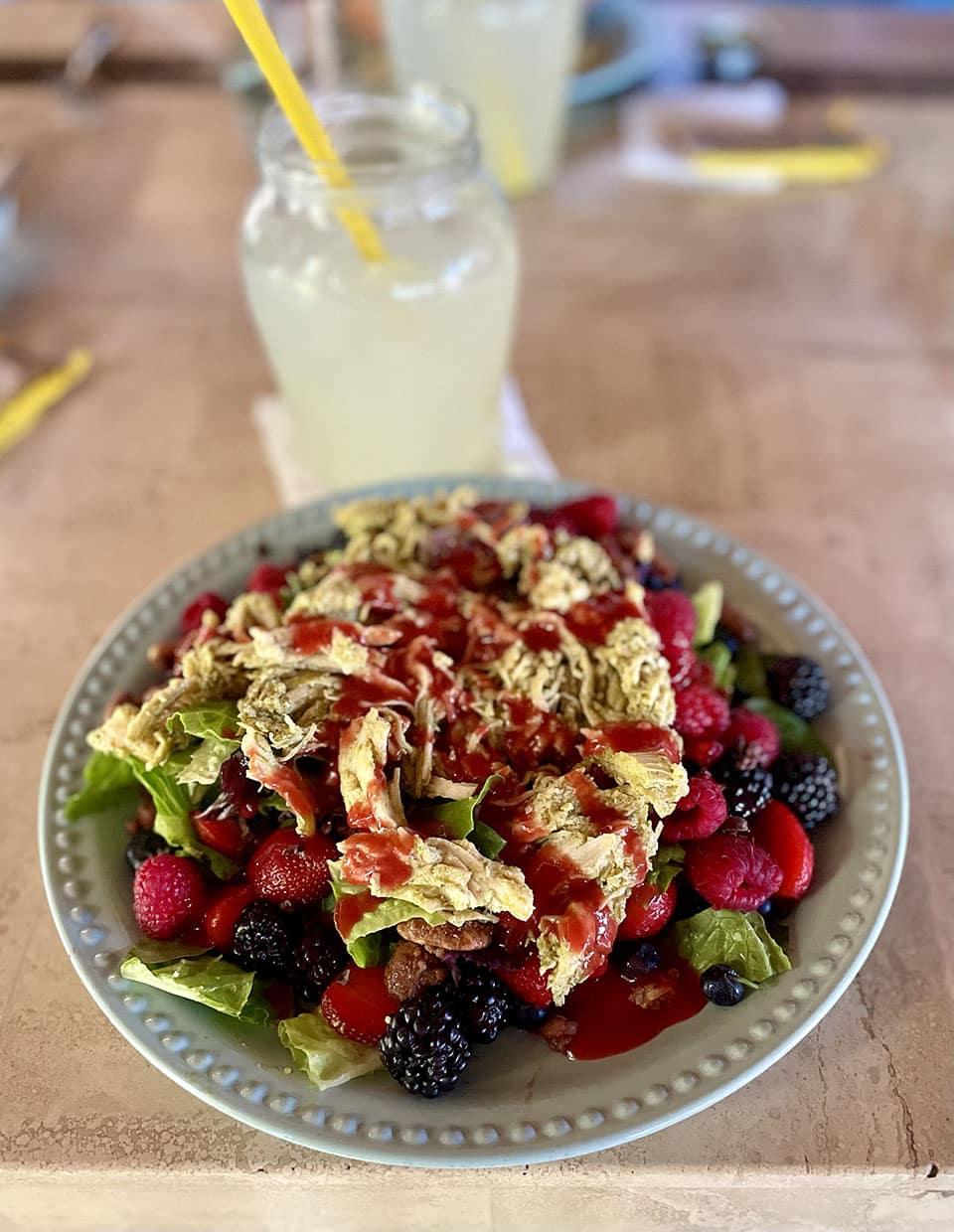
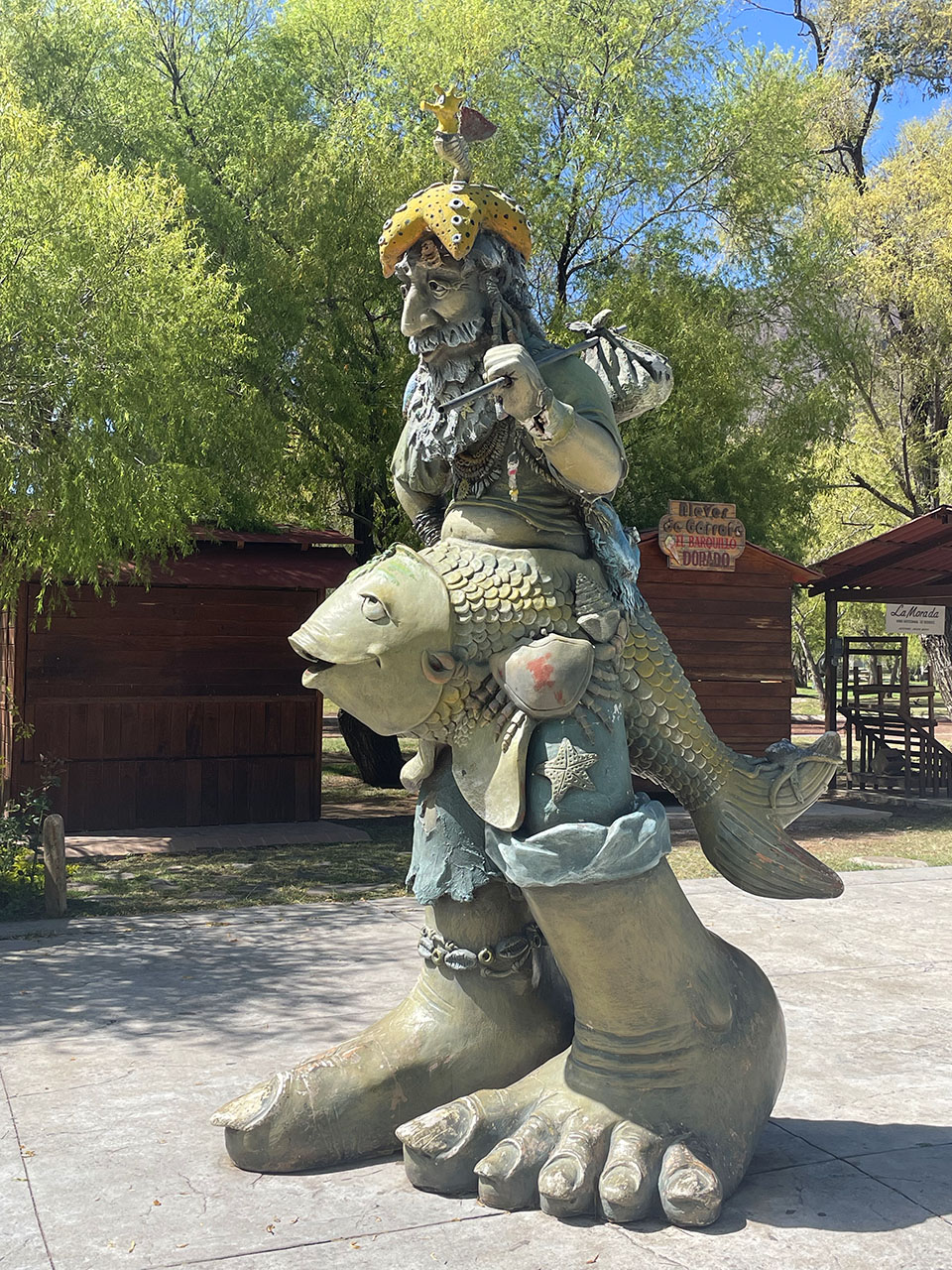
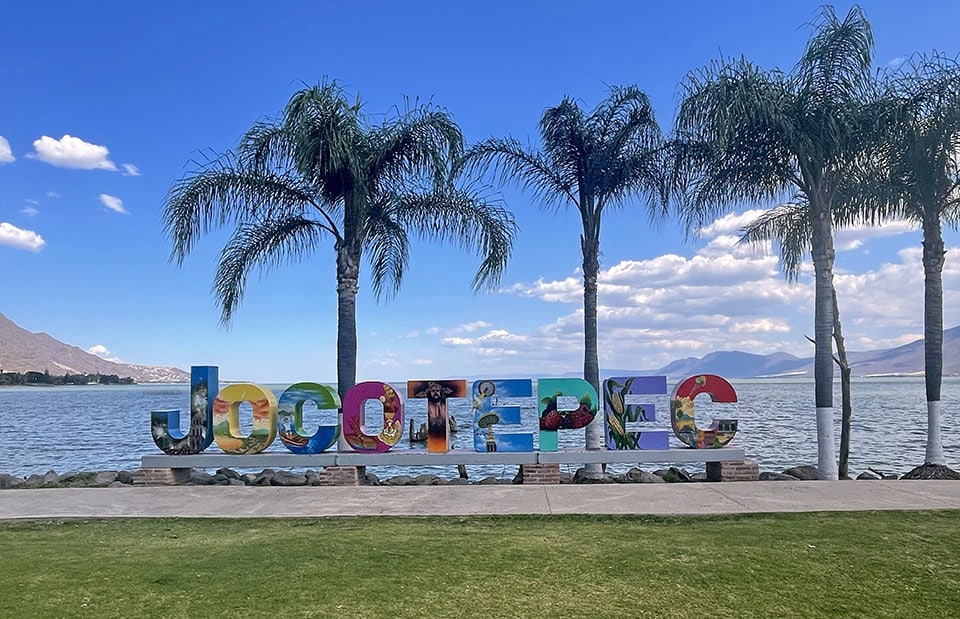
After lunch, we walked through the waterfront park along the west end of Lake Chapala. As with many Mexican towns, Jocotepec had scenes painted on letters spelling the town’s name. It also had some interesting art and sculptures, like this merman above. Seeing lots of white pelicans and white herons fishing, was sadly ironic— all these birds swimming and fishing in the lake with signs telling people not to swim or fish. UGH! We are hopeful that in the coming years, Mexico will figure out how to clean up this polluted lake, much the way the US has cleaned up many polluted waterways over the last 50 years. The birds and fish deserve better!
Of course, our visit would not be complete without a game of Mexican Train, and Patti & Frosty invited a few friends over for a fun game one evening. We also visited their friend Michael’s historic Mexican plantation villa and lush garden with avocado and pomegranate trees and were grateful to take home a couple of LARGE avocados, thanks, Michael!
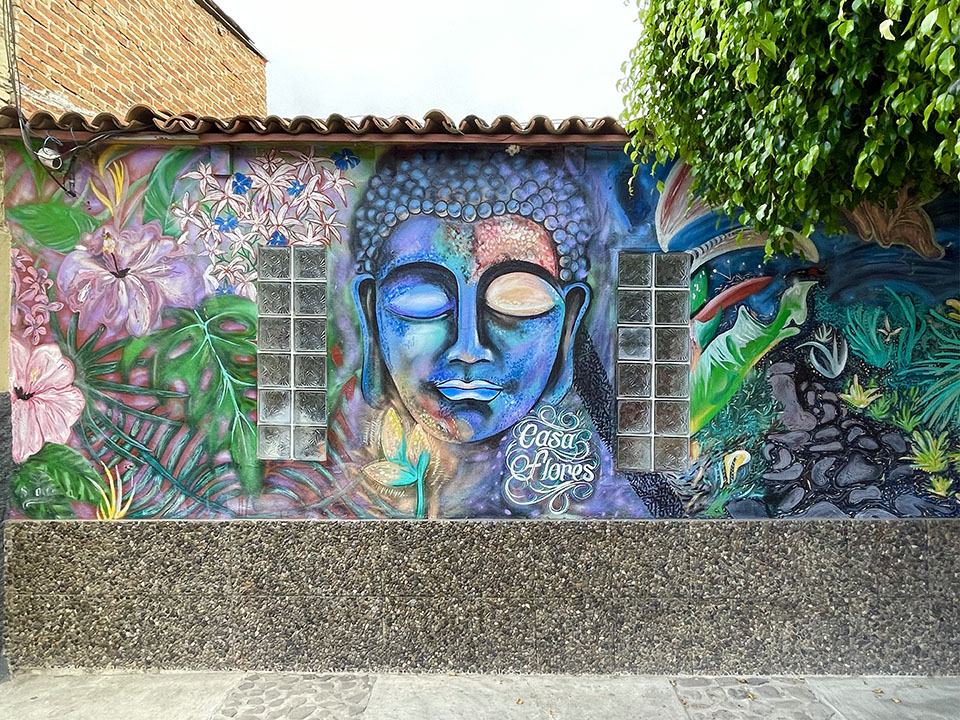
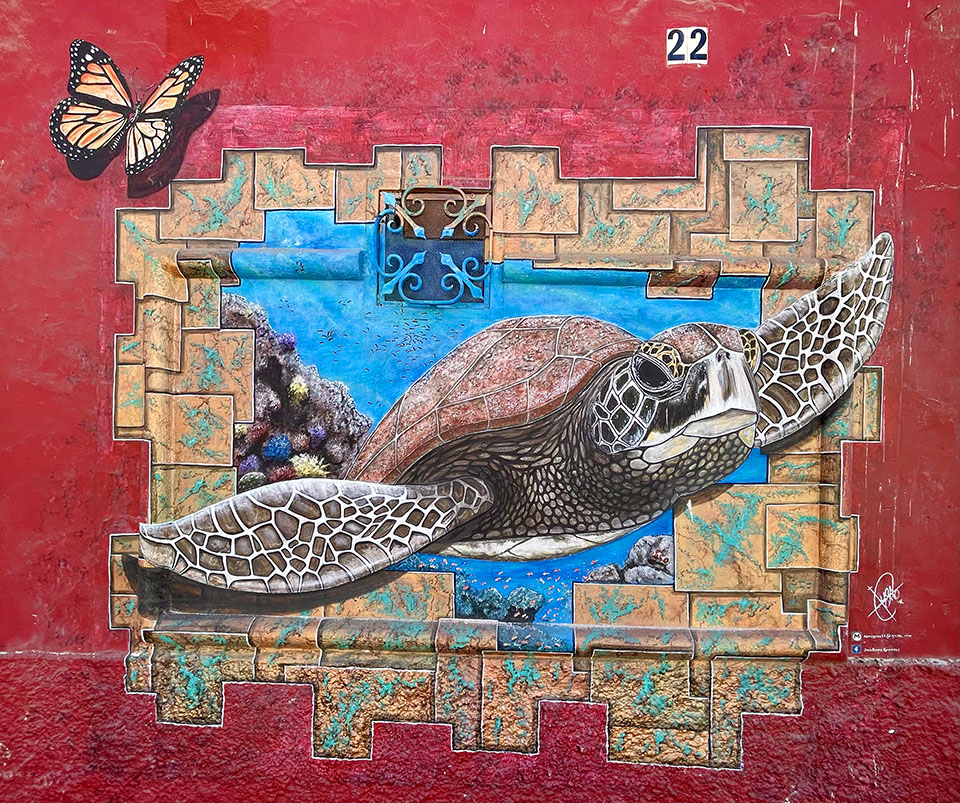
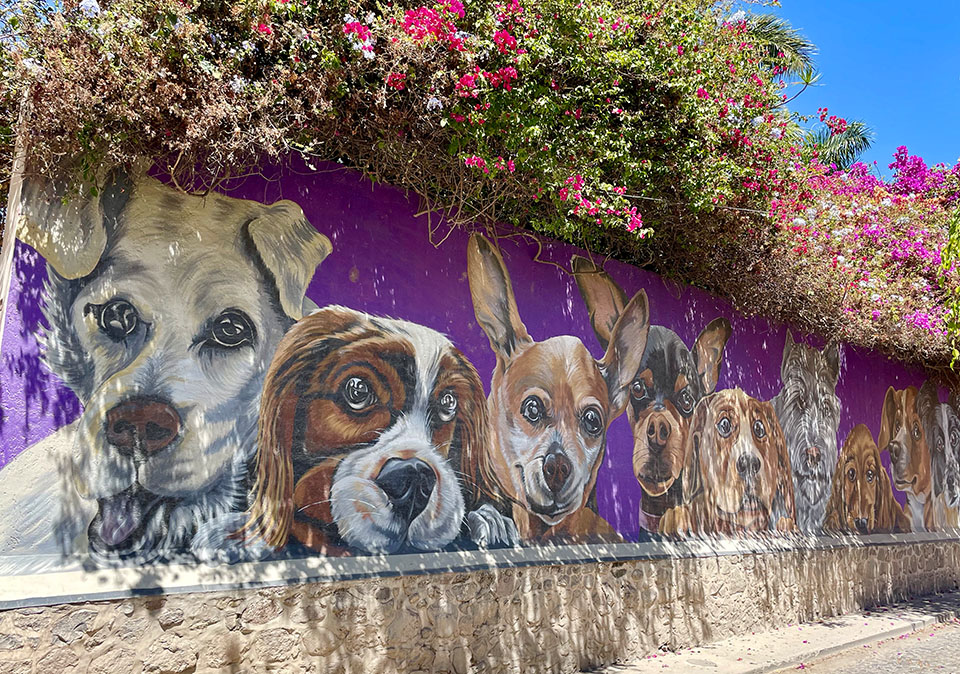
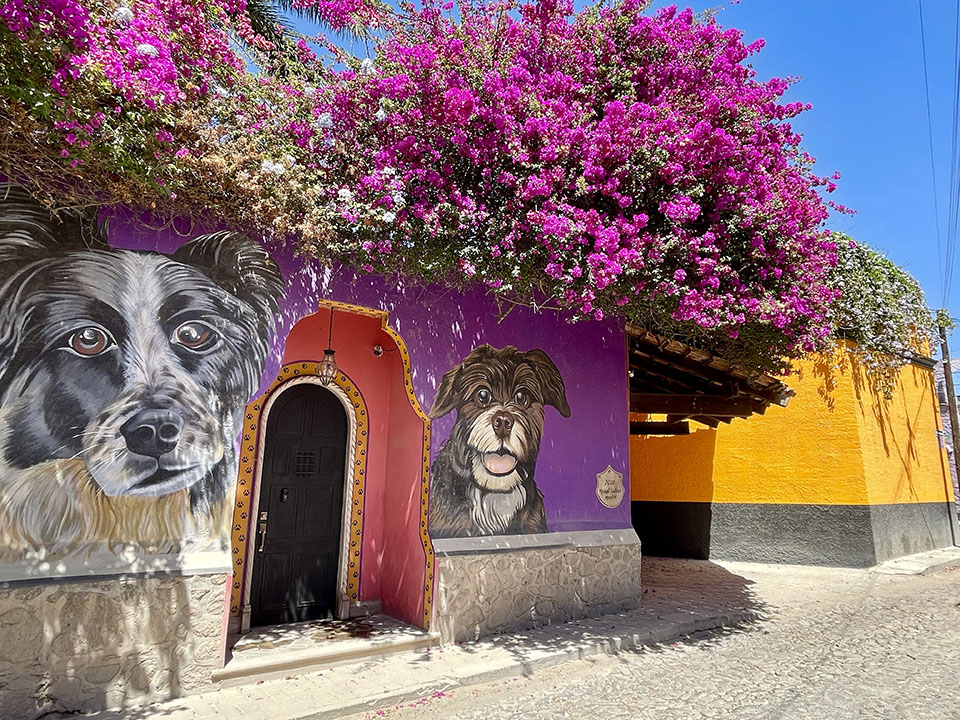

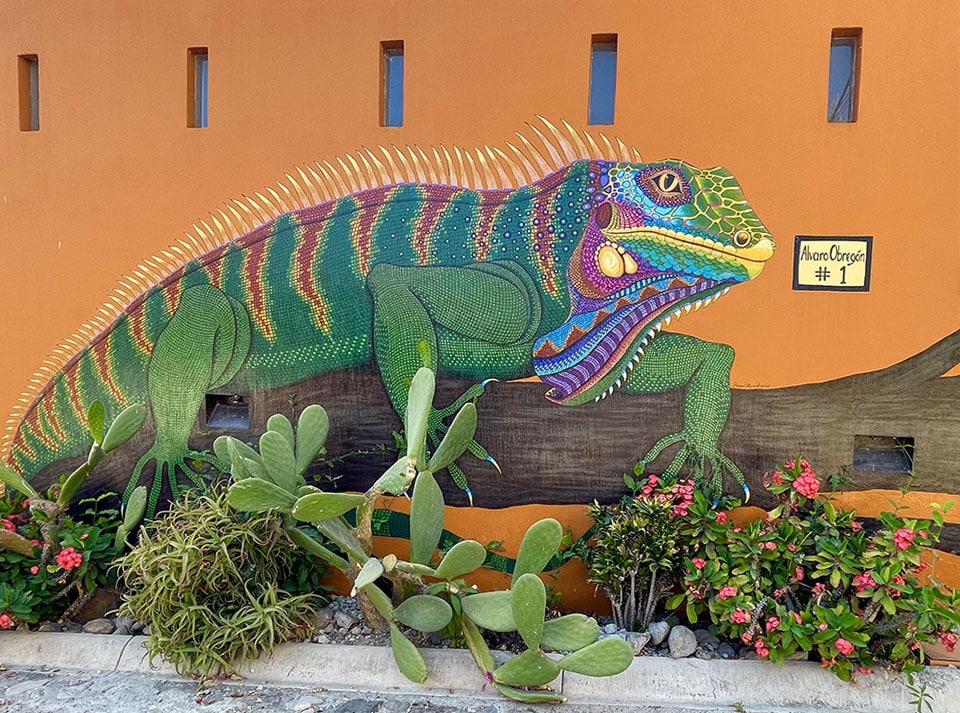
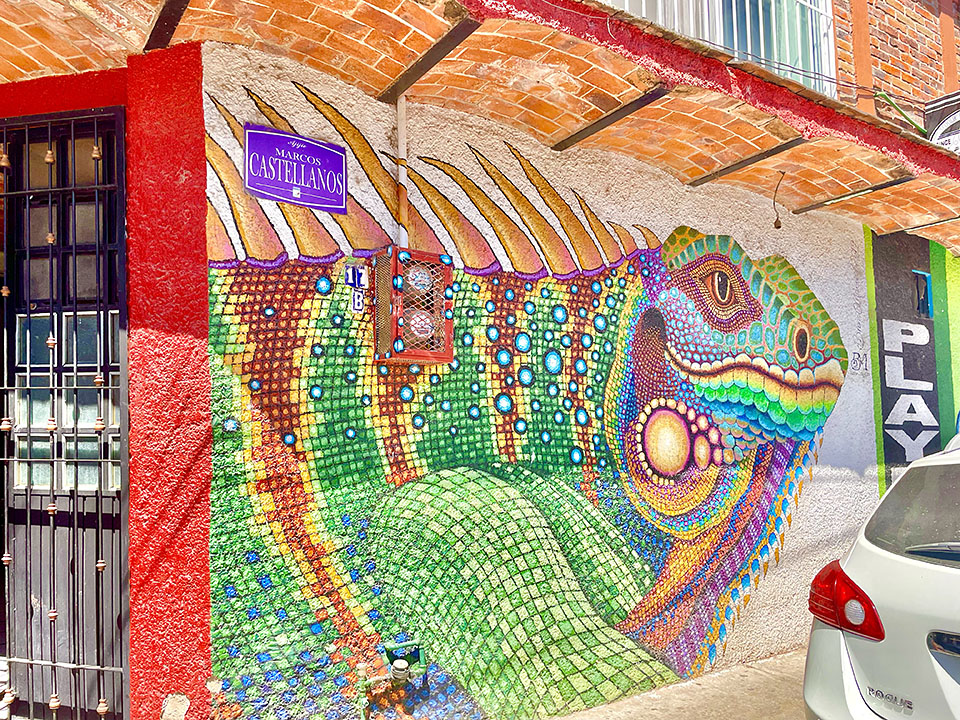
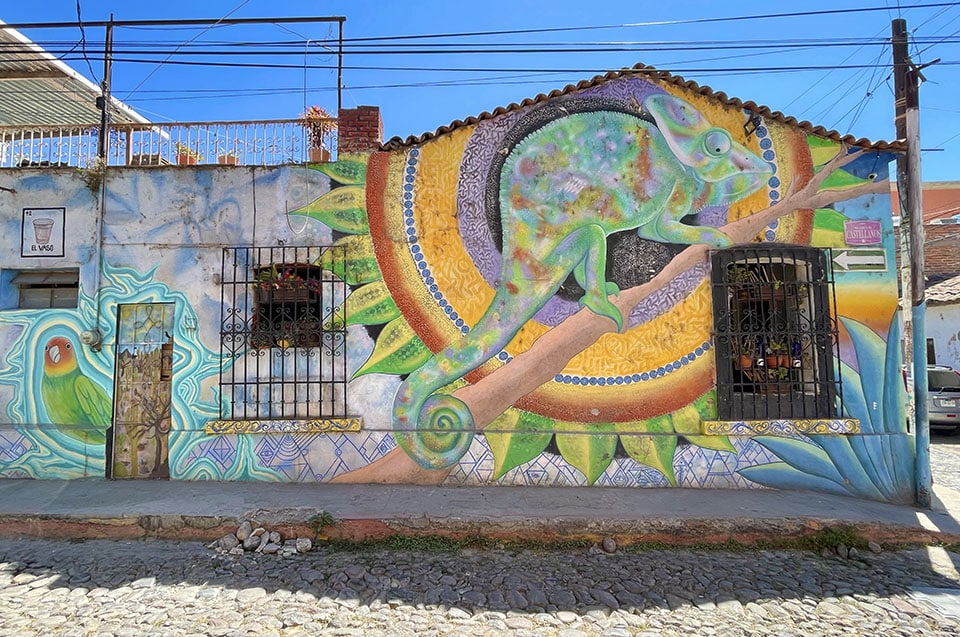
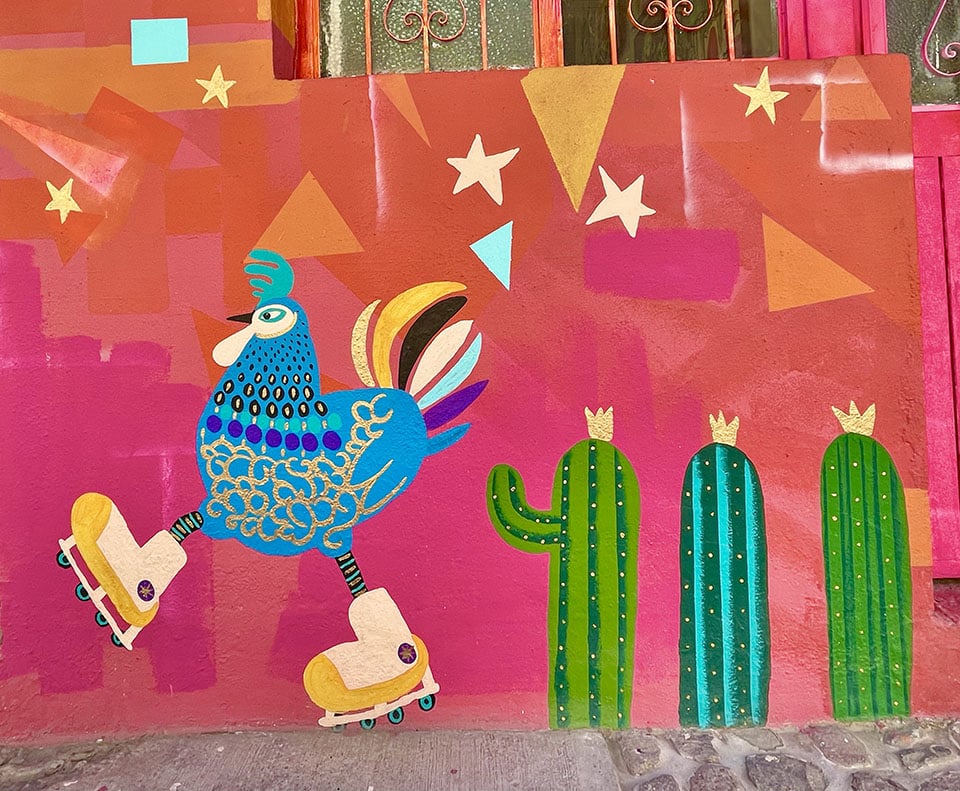
While there is a good ExPat community in Ajijic and it is a tourist destination, it’s also still a very Mexican town, retaining its “old Mexican” flavor. You can see this in the local shops, and in the people walking down the street greeting each other. And with street vendors like this entrepreneurial knife sharpener.
Get your knives sharpened here!
All too soon, it was time to leave our favorite new-to-us Pueblo Magico, and our dear friends. Such a fun, vibrant time with our BFFs Patti & Frosty. Thanks so much, we’ll definitely be back again soon!
The return bus ride was non-eventful, same blue agave scenery, but this time the bus took the “carretera libre” (free highway) instead of the new toll highway (see map) for part of the return. We’re not sure why the change in route, but it added another hour to the trip home.

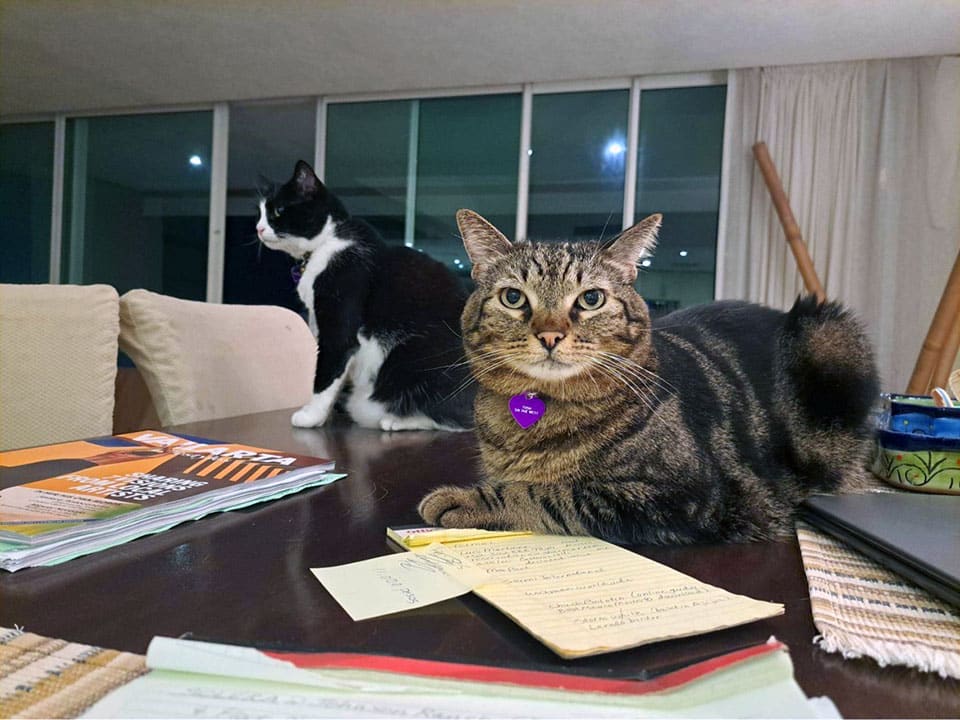
Tikka and Tosh were sad to have their very last stay with Judy & Paul at the Grand Venetian. They have sold their beautiful condo and returned to the US, to the Pheonix area to be closer to friends. We will all miss them!!
Back aboard Due West, we’re in hurry-up-and-project mode, trying to get out of here ASAP for a few weeks of cruising before hurricane season hits. We still don’t know where we’ll be cruising to, but if we get our PredictWind DataHub set up correctly, you should be able to follow our route.
As always, our plans are written in sand at low tide. Wishing fair winds and following seas to all of you!
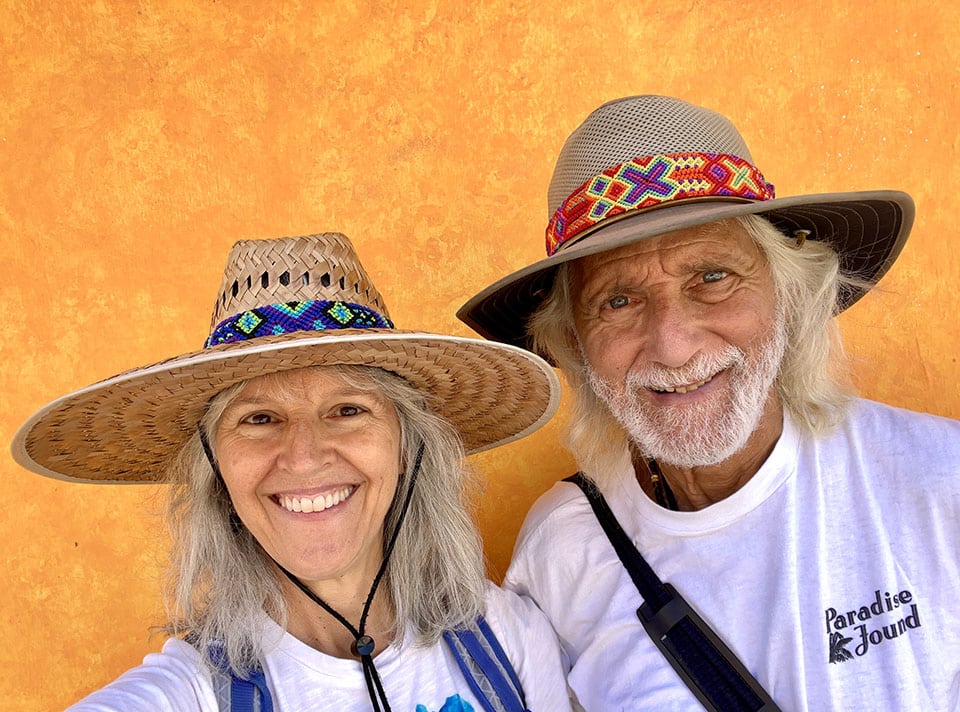

Loved seeing all the artwork, thanks for sharing! What a great place to visit.
Happy sailing adventures ahead…
This blog is inspirational in documenting the spirit of Mexico art!. Well done on doing the adventure and sharing it. Hopefully paradise will continue.